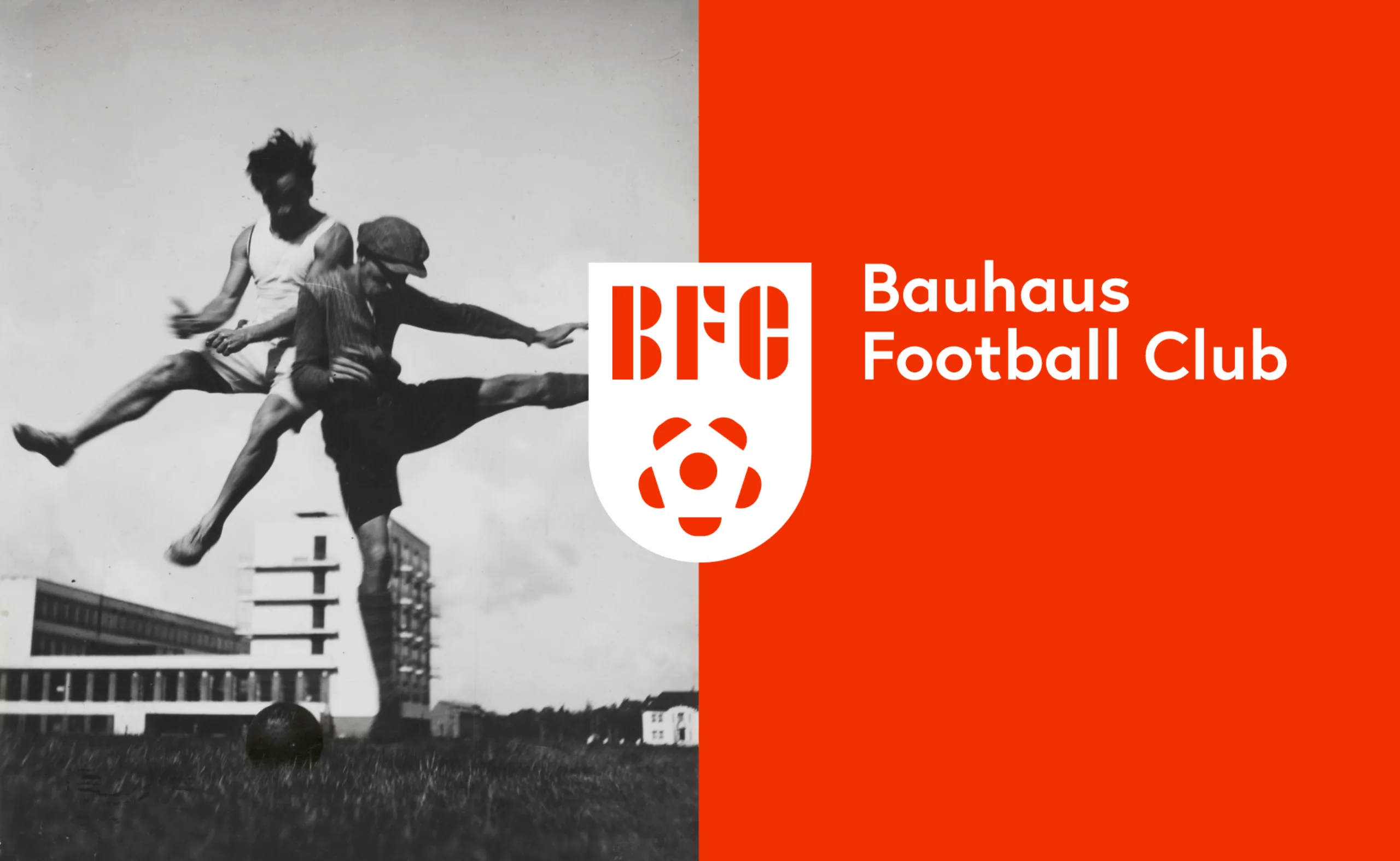When Africa meets design
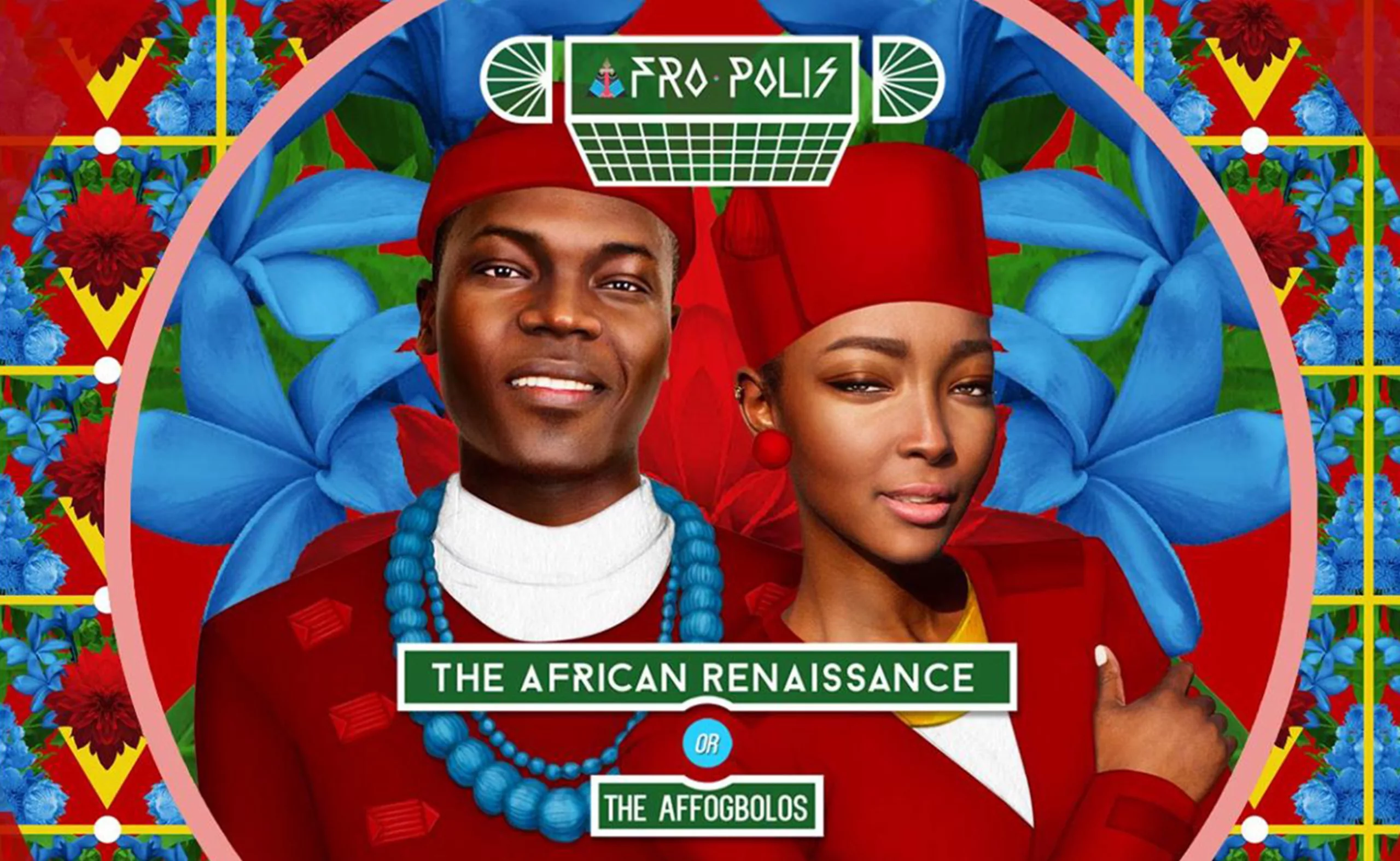
Making a good impression
At first glance, graphic design is rarely related to Africa. For cultural and historical reasons. The importance of the oral tradition and the recent dominance of European languages by colonialism led to the idea that African languages as a whole had no written forms or that they had been designed very recently.
We usually associate the origin of graphic design with the discovery of Gutenberg printing process back in the fifteenth century. Lacking sufficient printing and industrial structures, the printed materials were never really able to bloom in Africa. Therefore, the Roman alphabet and with it the entire Western graphics have been spread in African cities through advertising.
From Ghana’s Adinkra symbols that are centuries old, to geometric decorations painted on the walls of houses by South African women… through the alphabets designed in the early twentieth century in Guinea to the patterns of wax fabrics worn in West Africa, the African continent is actually filled with writing systems and designs of its own. A new generation is emerging thanks to this graphic legacy and the impulse of Saki Mafundikwa.
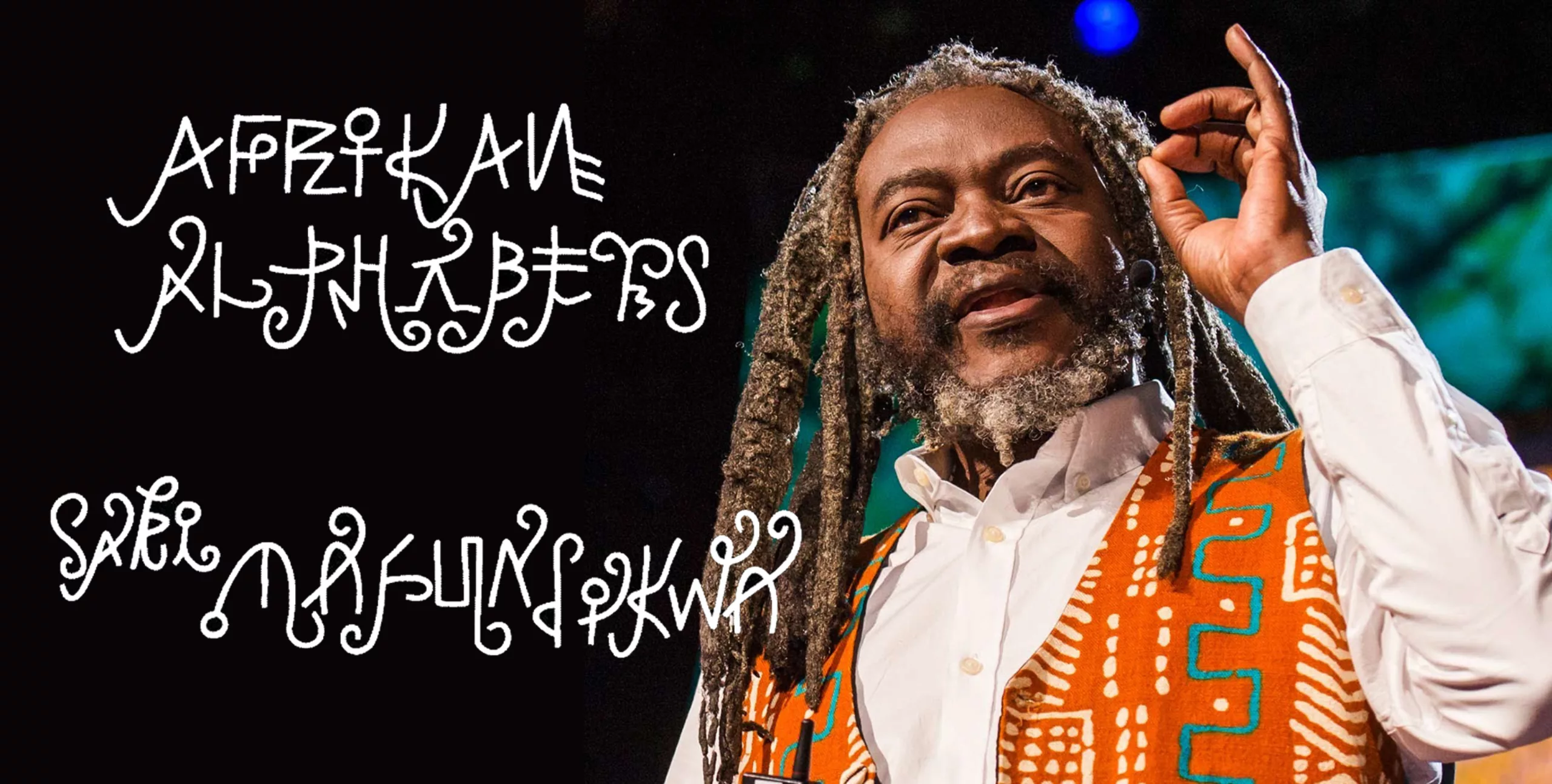
Evolve or die !
In 1997, Saki Mafundikwa puts an end to his brilliant career as a designer in New York and flies back to his native Zimbabwe to open the first graphic design school and new media of the country: ZIVA (Zimbabwe Institute of Vigital Arts). Clearly underlined by the slogan “Evolve or die” on the school site home page, his ambition is nothing less than to initiate an “African renaissance”. As he recounts in detail in his book Afrikan alphabets (check out his TED conference, on the ingenuity and elegance of the ancient African characters), the African continent is full of alphabetical scripts, syllabic hieroglyphics, ideograms, either very old or newer.
We know better where we go when we know where we come from. It is probably with this saying in mind that the Zimbabwean designer crossed Africa from East to West, in search of those records. He followed the footsteps of the African diaspora beyond the Atlantic, to Cuba and South America. Some alphabets he transcribed are very old, such as the Tifinagh of the Tuareg people.
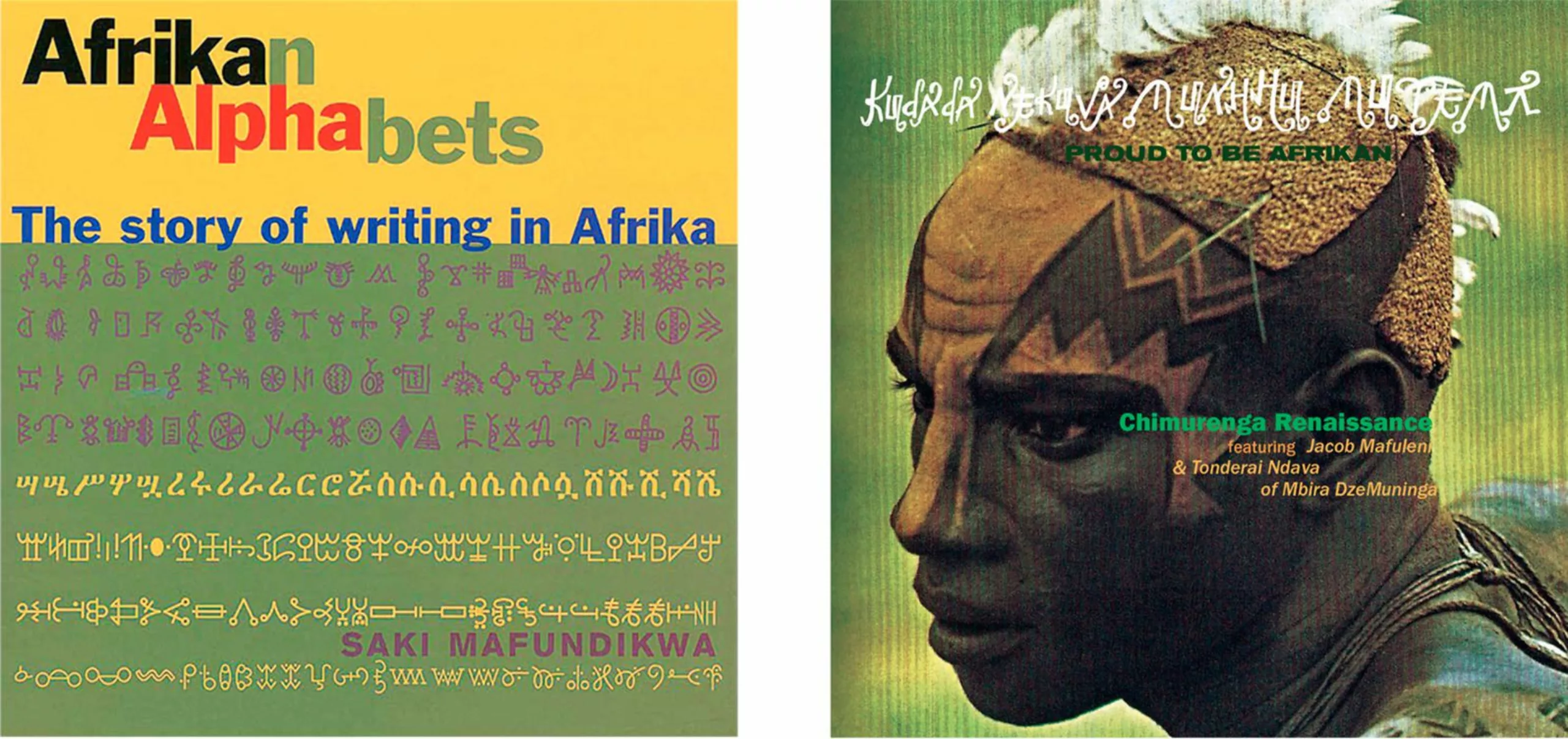
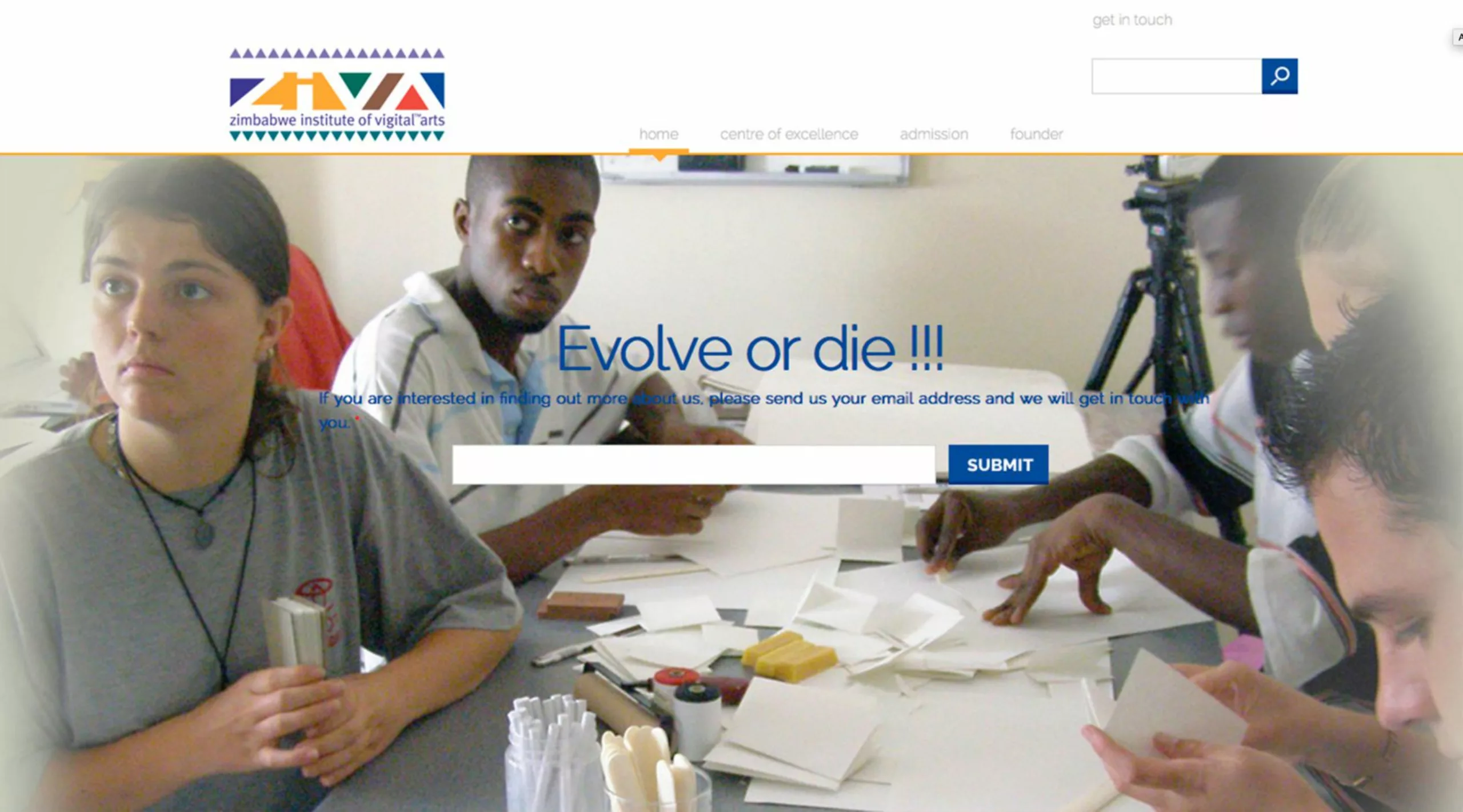
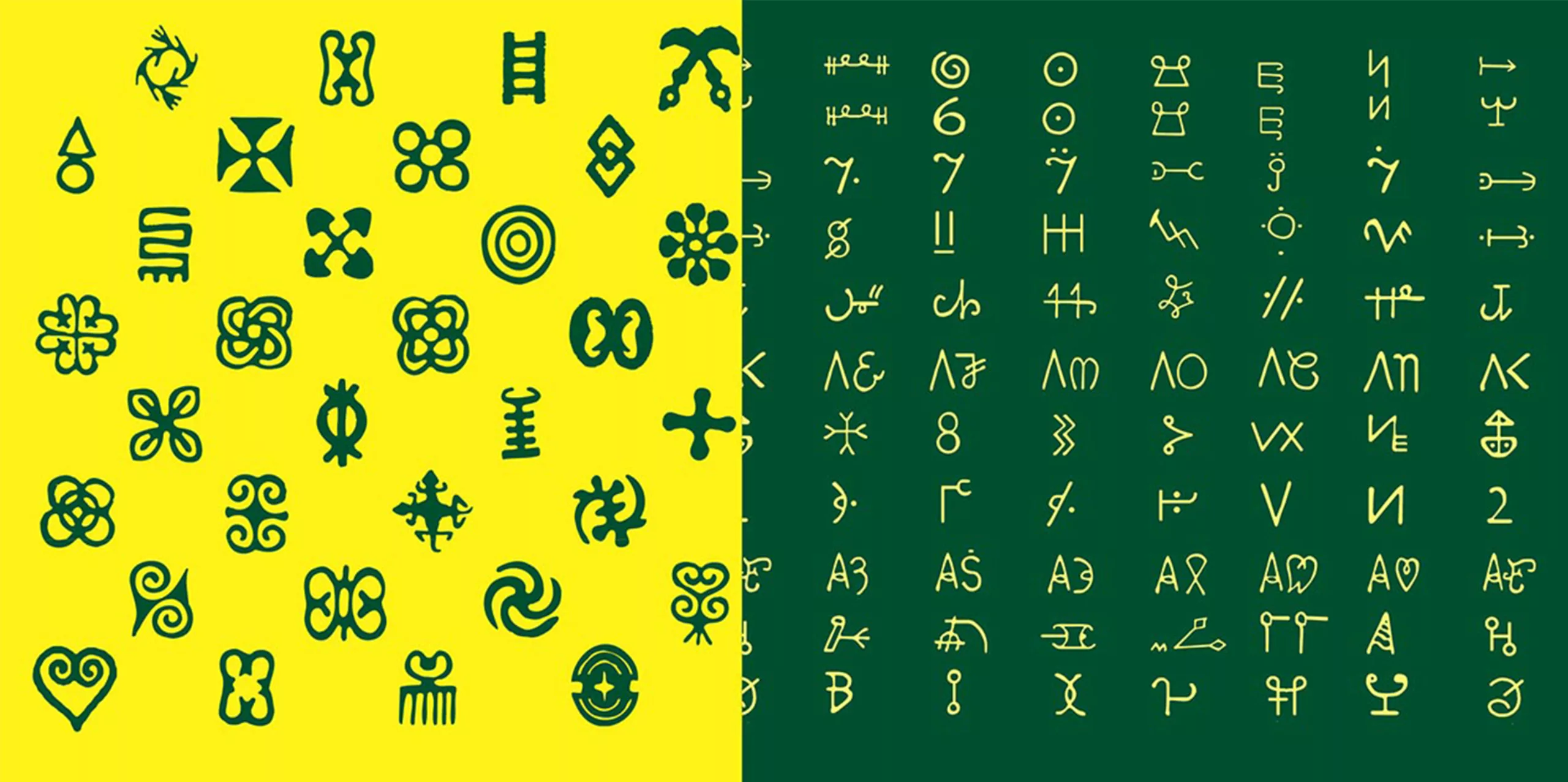
To learn more about Saki Mafundikwa and his practice of typography, check out his interview on Another Africa.
Here’s a chosen extract:
« I see Afrikan alphabets offering a breath of fresh air that can rescue the Roman alphabet from the vagaries of style and trends. As a typographer, and more importantly as a designer, I am in the business of the creation and peddling of ‘Beauty’. […] Afrikan alphabets offer a more aesthetically pleasing perspective and alternative. The deconstructionists could care less about ‘legibility’ instead they care more about the “expressive” nature of typography. Afrikan alphabets straddle those two extremes comfortably. »
And here are some examples of alphabets transcribed by Saki Mafundikwa in his book Afrikan alphabets:
T for Tuaregs and Tifinagh
Tifinagh is an ancient form of Berber script used by the Tuareg from Algeria and Libya, to write the Tamashek language. Originally composed of consonants only, vowels were lately added. Written words follow each others without spaces in-between, and can be read either vertically or horizontally. Their geometric outline allows them to be set in stone or secretly drawn in a hand palm. From one region to another, the Tifinagh characters are slightly different, each group using specific characters. The text below was written by Aboubacar Allal, a goldsmith Tuareg from Niger that Mafundikwa met in New York.

For a deeper approach, the French typographer Pierre Di Sciullo designed between 1995 and 2003 four fonts that allow to transcribe Tifinagh: the Amanar.
The Bambara alphabet
The Bambara alphabet was transcribed by Woyo Couloubay around 1930. This language is spoken by more than 3 million people in Burkina Faso, Ivory Coast, Gambia, Guinea, Mali, Mauritania and Senegal.
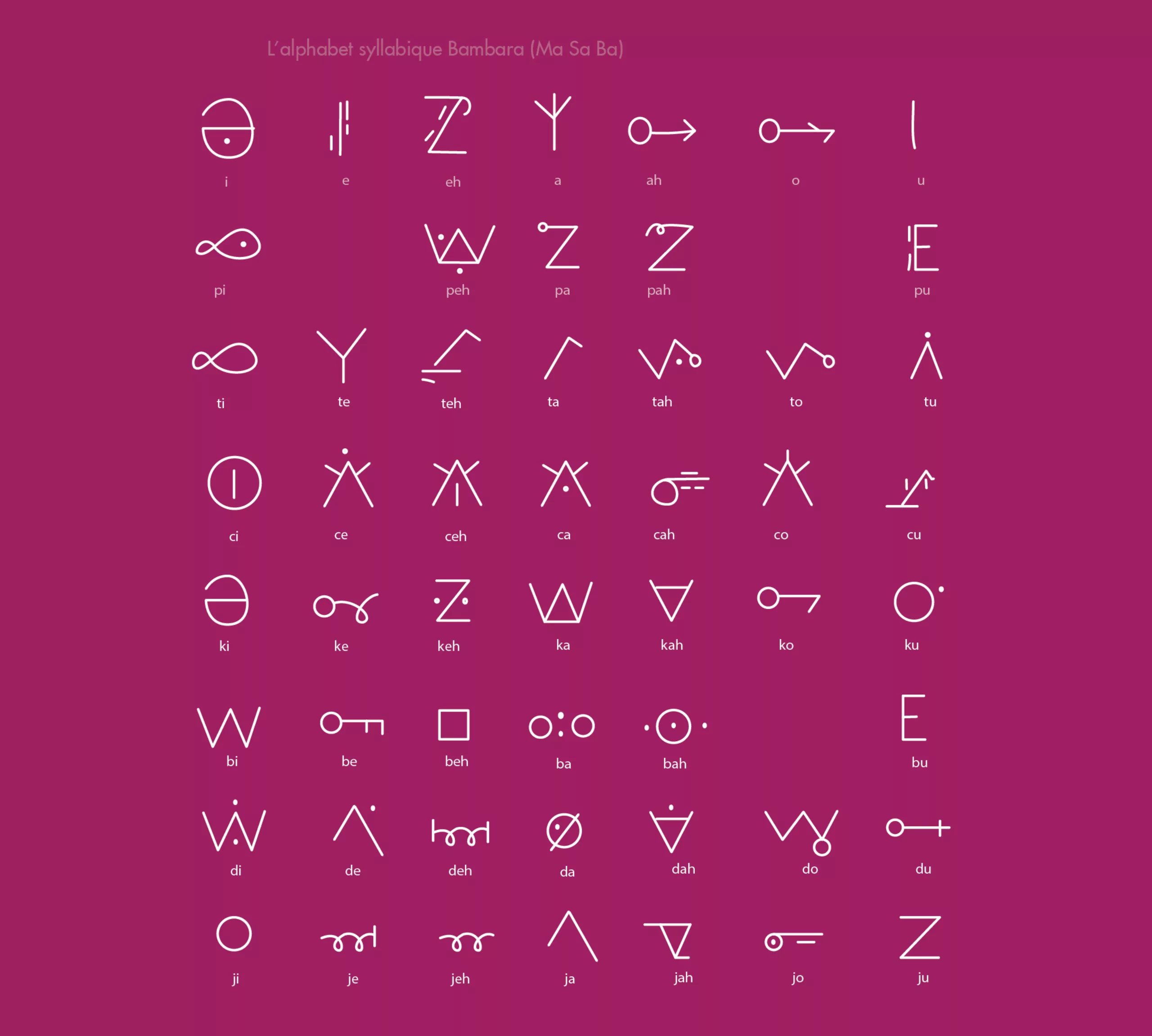
Nsibidi alphabet (South Nigeria)
Dating back from the eighteenth century, the Nsibidi script was originally invented by Ejagham people from south Nigeria. This language has been developed prior to the “Ekpe men” or “Leopard” secret societies. The signs are engraved on objects or painted on clothing using the bogolan technique (dyeing technique based on a decoction of birch leaves, mpécou bark, fermented mud and a mixture of soap and chlorine).
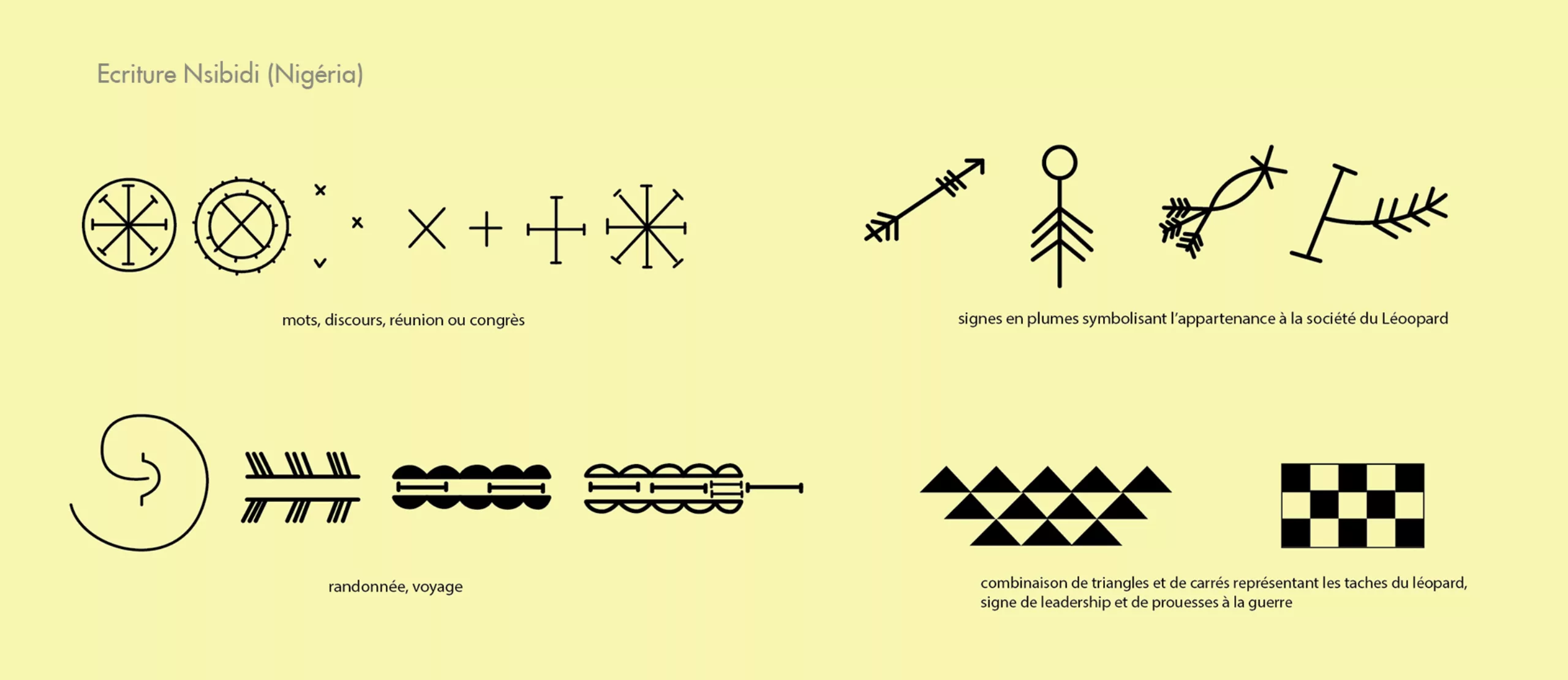
Syllabic Loma alphabet
This alphabet, meant to be read from left to right, was created in the 30s by Wido Zobo Liberia.
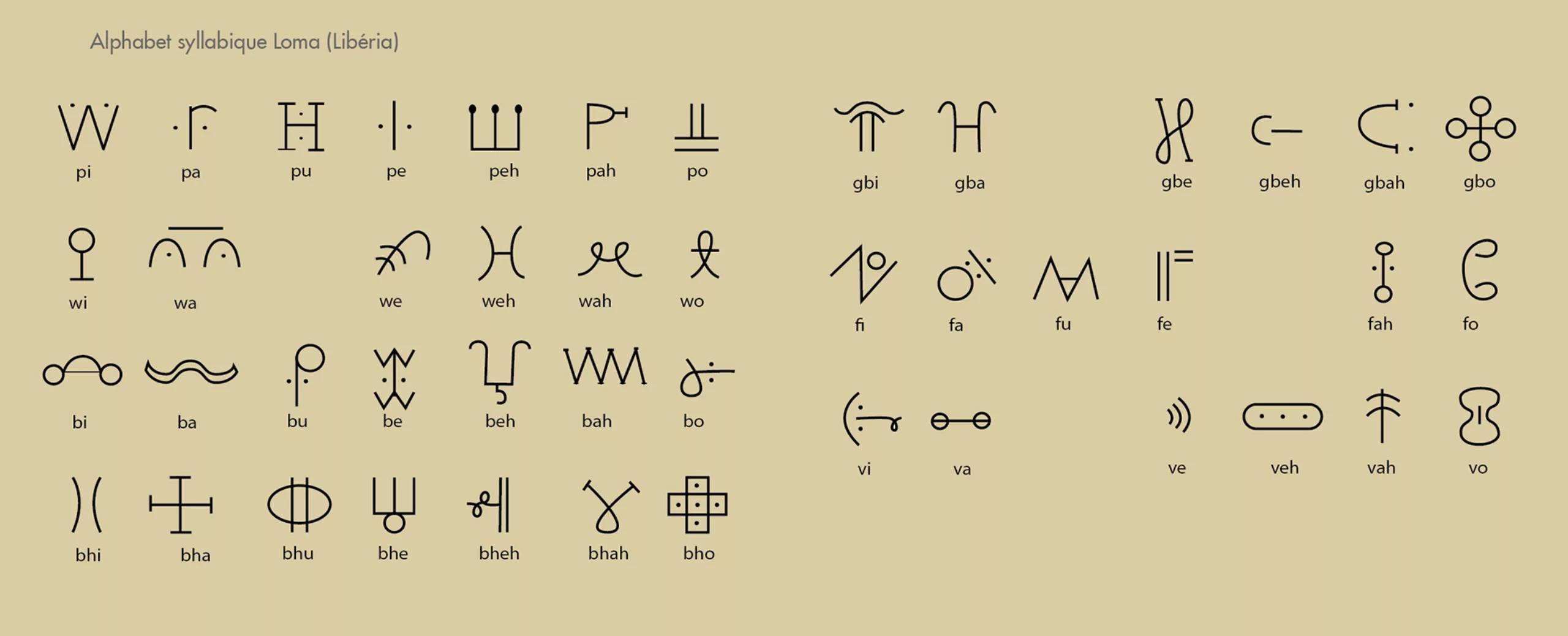
Vaï alphabet
Listed in 1820 by Dualu Bukele, it is based on signs used by the elderly added to different pictograms used in certain rituals. The Vaï alphabet comes from Liberia and Sierra Leone regions. It contains 190 phonemes (a phoneme is the smallest sound unit of a language spoken). On a side note, transcripts of the Bible and the Koran into Vaï have allowed the diffusion / assimilation of new monotheistic religions throughout Liberia, that are today practiced by around 105 000 Vaï people.
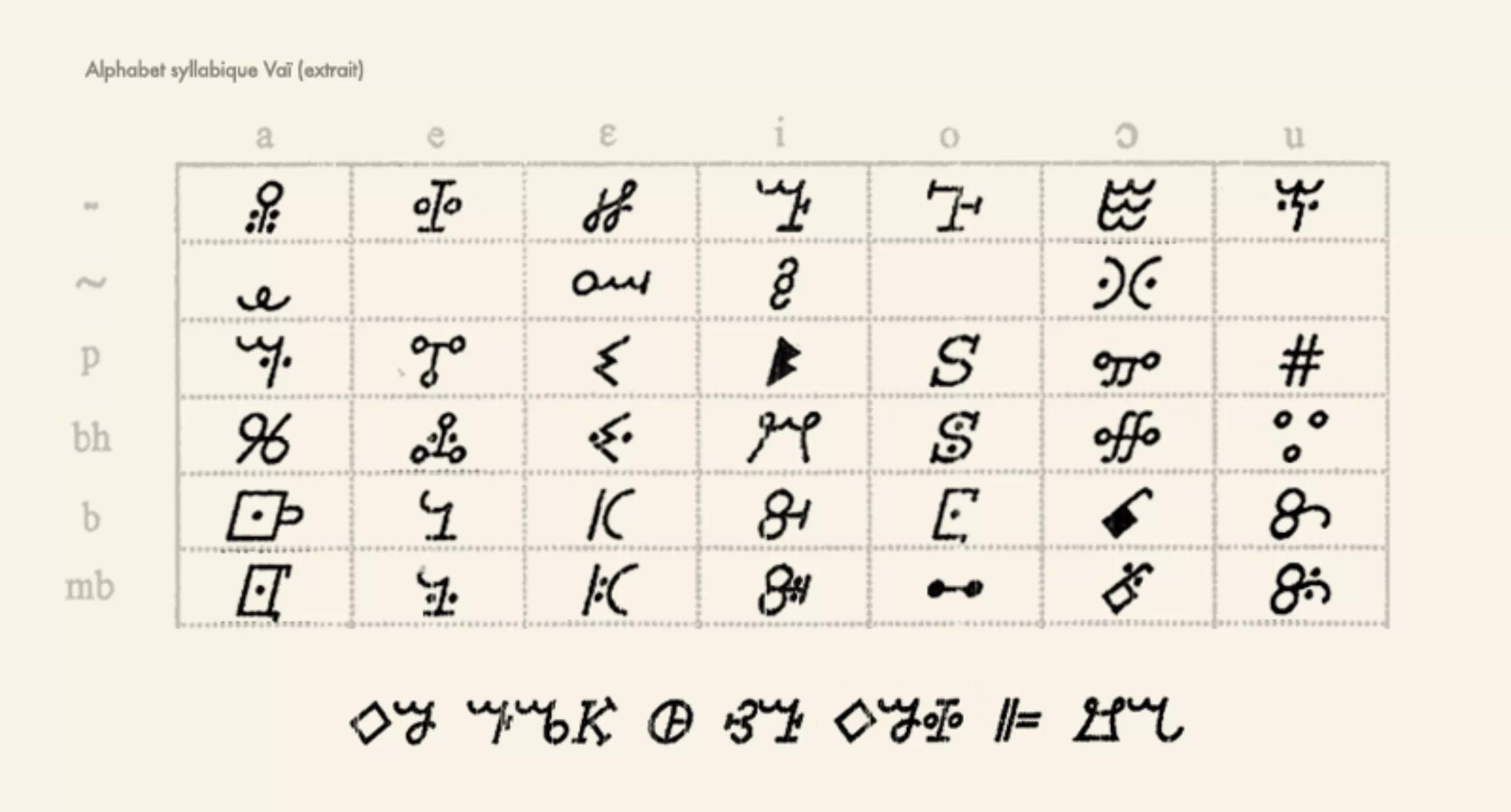
Bantu / Ndélélé alphabet
The pictorial writing system of the Ndebele is quite similar to the Bantu alphabet, and come from Southern Africa. Ndelélé women are known to use this system to skillfully decorate their house walls, mixing highly colorful symbols and geometric patterns. Their houses and by extension their culture, is now classified cultural heritage by UNESCO.
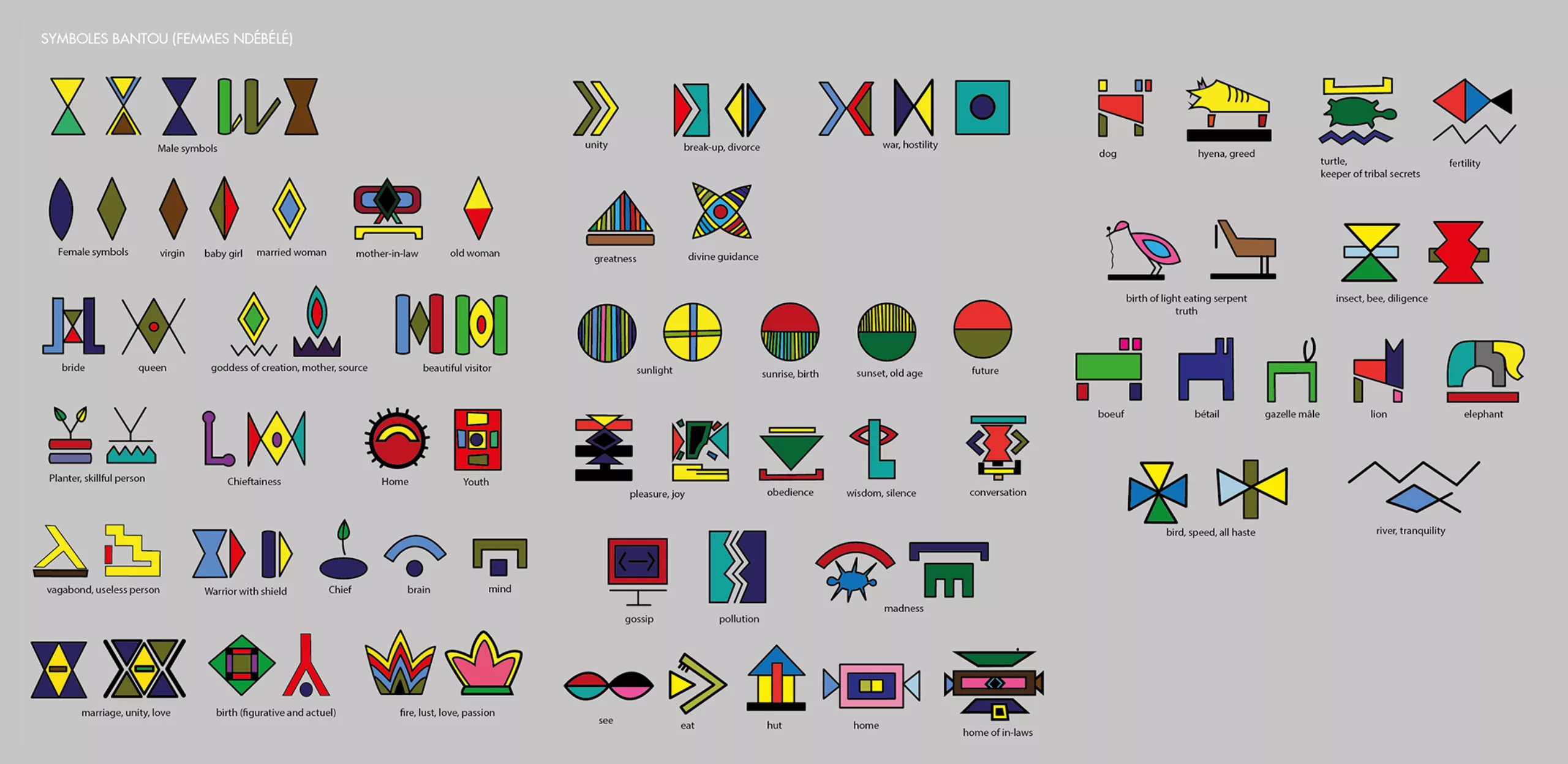
Recently these patterns have been declined on all types of contemporary objects or have been used as graphical object to create visual identities.
These non-profit objects reflect a willingness to adapt symbols assigned to a specific culture into a kind of graphic quote for new contemporary media.

Above: Creation of the visual identity for beauty products line by Cécile Johanet : “I wanted to graphically dig this track and I proposed a young entrepreneur who makes natural cosmetics for Afro hair and skins to integrate these symbols in the visual identity of the brand.”
Adinkra alphabet (Western Africa)
Some Adinkra ideograms were discovered engraved on tiny gold weight used by the Ashanti, long before colonization, making it difficult to put a date on their origins.
Still used today, these signs are associated with proverbs, sayings, recommendations, which constitute the cornerstone of the Ashanti culture. These can be: advice on education, sustainability (how to use the long-term natural resources), politics with the definition of democracy or the sharing of wealth. Symbols are classified according to their graphic meanings.
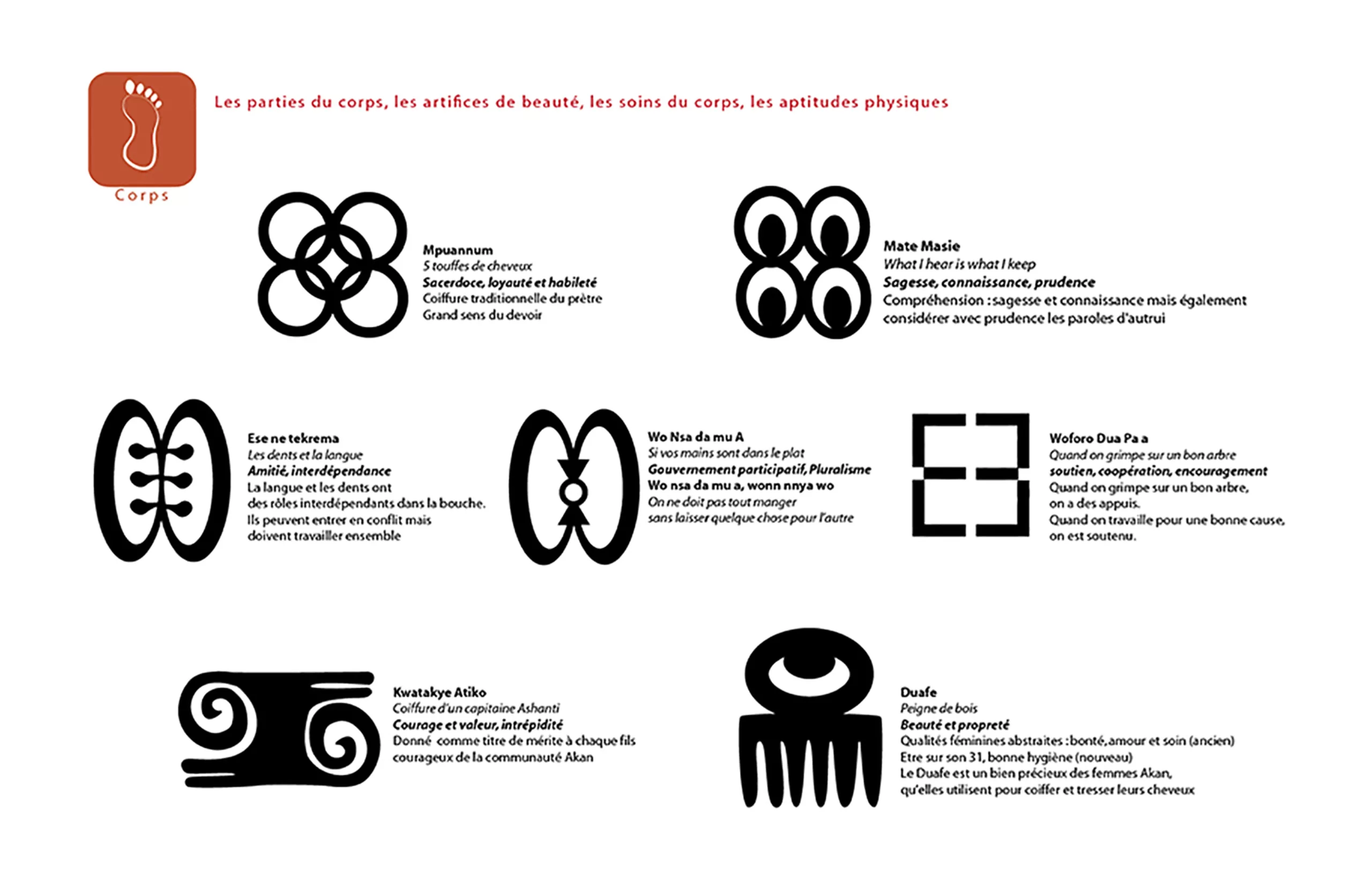
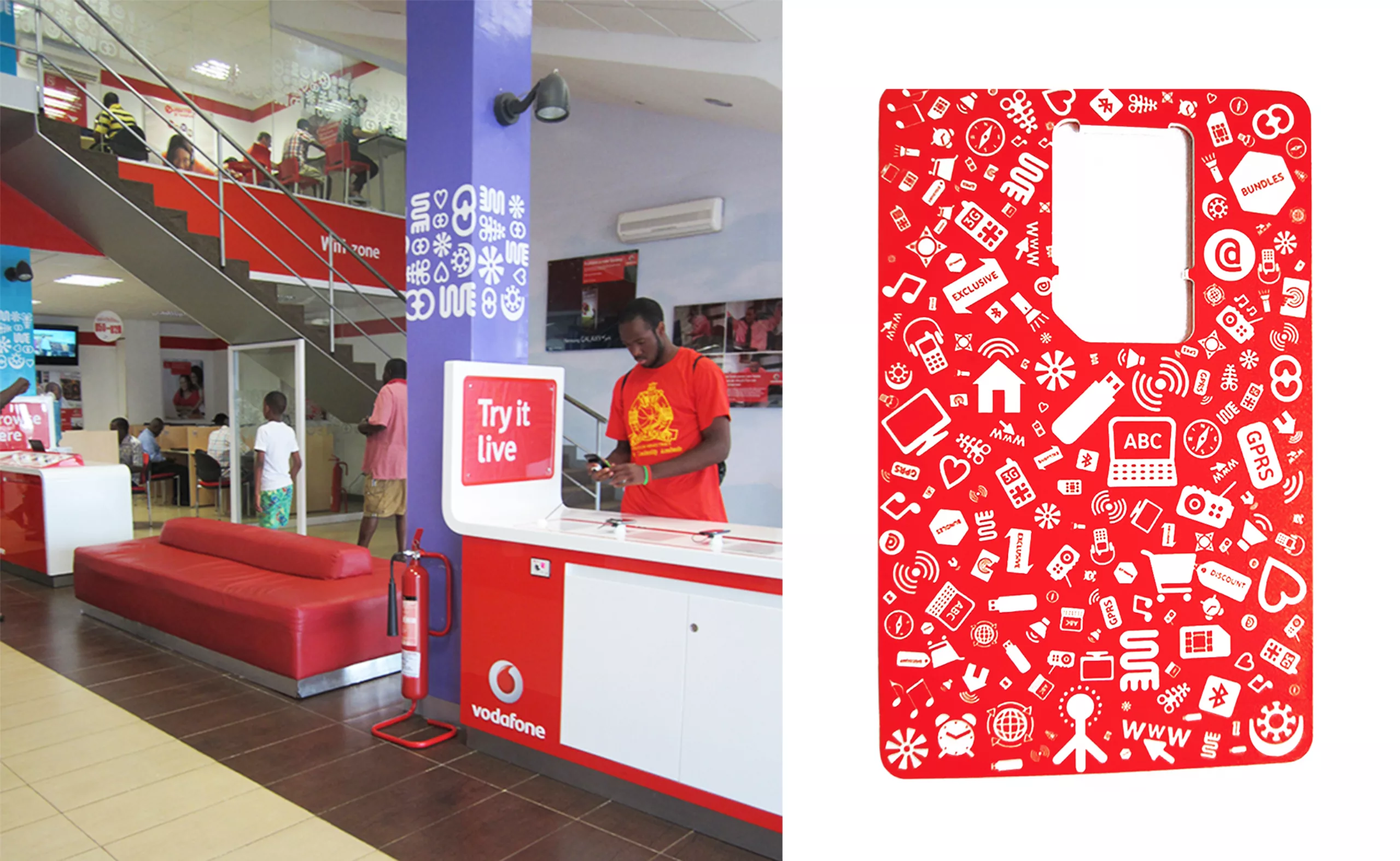
In Ghana, Vodafone borrows local traditional signs by decorating sim cards and shops using Adinkra symbols.
Facebook post from Vodafone Ghana, inviting locals to answer a quizz on Adinkras. Doesn’t this symbol remind you of the Carrefour logo ?
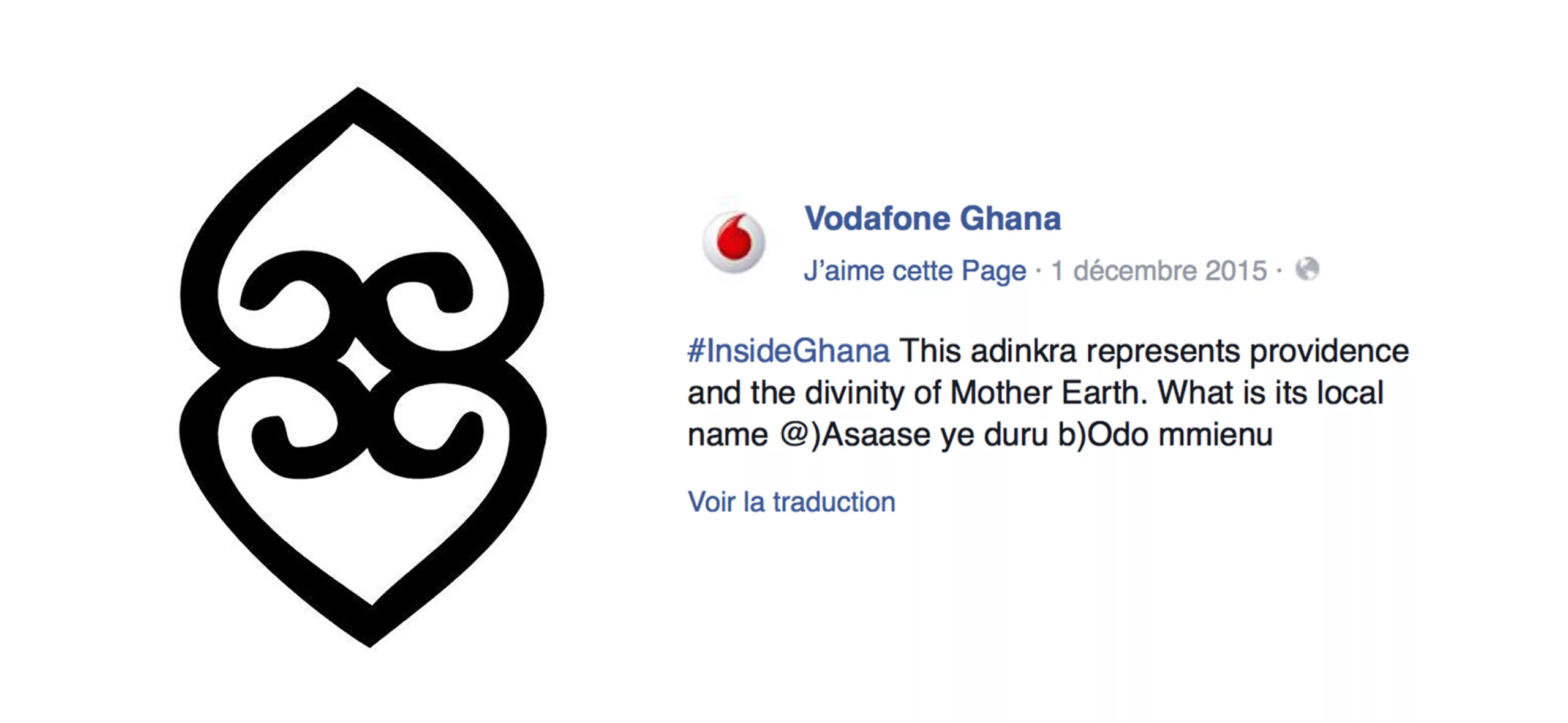
Today, African designers readapt these symbols to create local business logos. Conversely, international firms use these cultural landmarks as decorative trim on their products to meet the local market. This usurpation of traditional symbols by multinationals engages some rising resistance from local people …
In big cities and small villages in Ghana, some companies allow themselves to use the walls of private homes and community spaces for their own advertising. In many cases, they vaguely promise of small amount of money or free mobile phones to the families.
The public space, once belonging to communities and families, is now privatized with logos that significantly alter the urban landscape.
Re-Painting the Red
Charlie Michael took action in this context. He stamped once again over a home facade with a series of Adinkra symbols in an arrangement that imitates the Vodafone logo. This subversive act claims ownership of private space by the inhabitants.
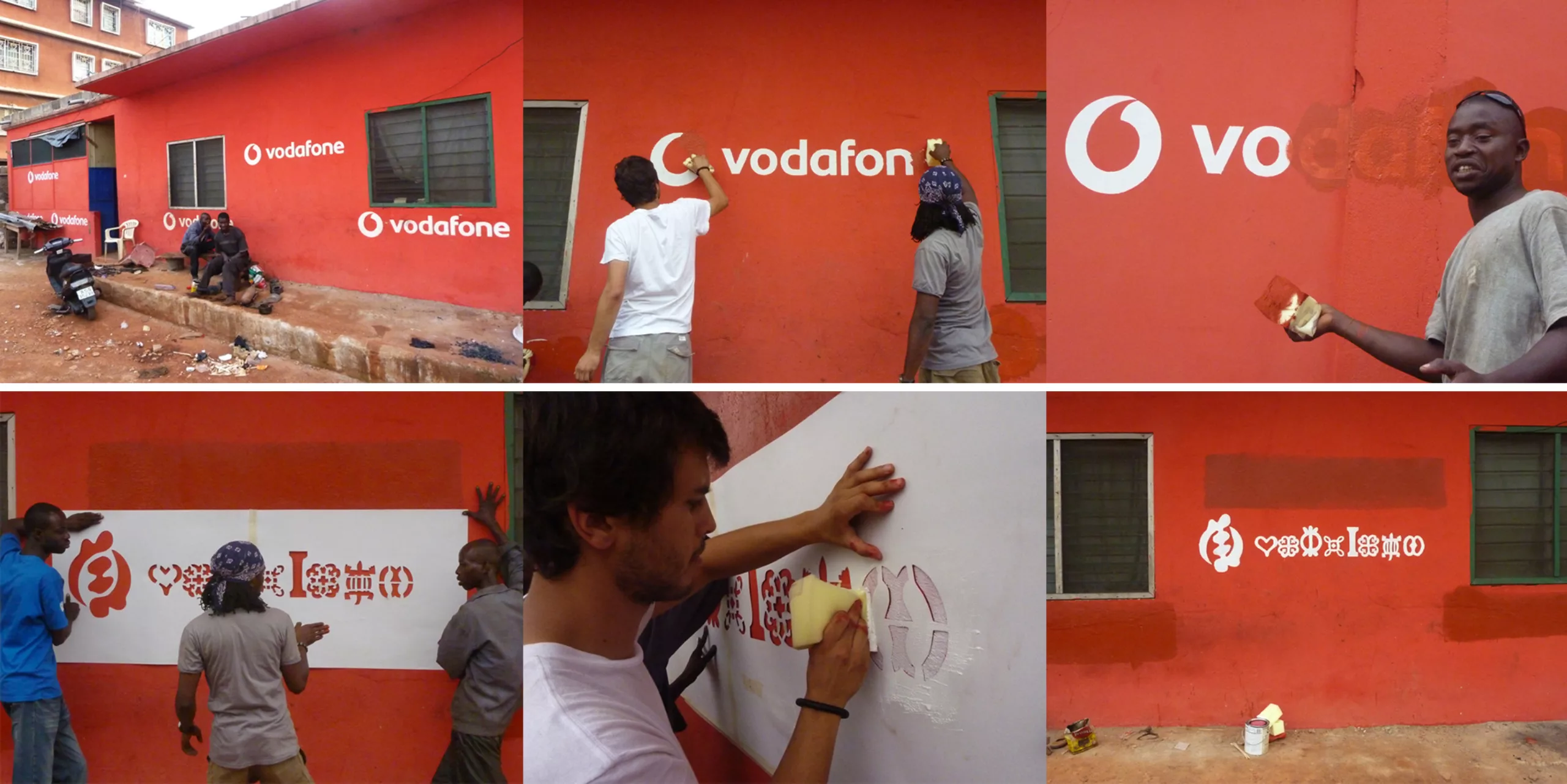
Re-Painting the Red, from the Curio Kiosk project during the Kumasi Symposium, Kwame Nkrumah University of Science and Technology. Kumasi, Ghana, July 2009.
Below: Logotypes of three Ghanaian banks inspired from Adinkra symbols.
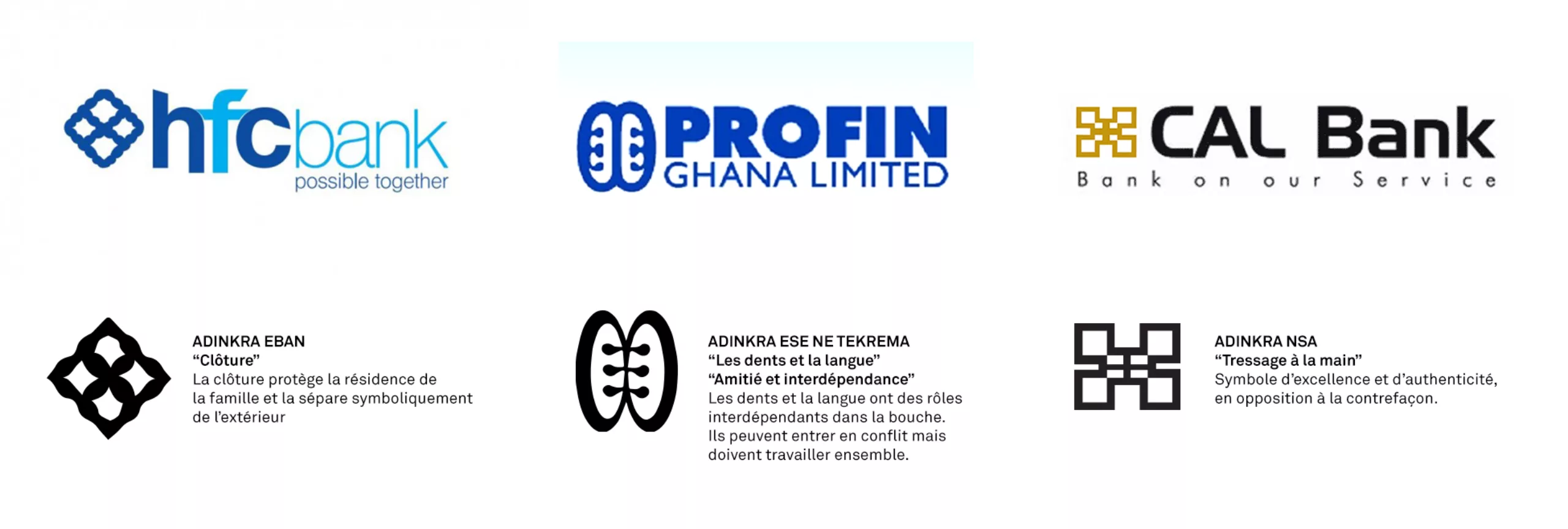
Direct diaspora (Africans living outside Africa) and indirect (several generations descendants) were the first to use Adrinka ideograms in their communication.
Today Adrinka, Bantoun, Ndélélé and other acronyms are considered as “African pictograms.” Since 2010 the website thenounproject.com collects and compiles visual communication symbols just as an image bank. Many graphic designers from various countries play a part in this project.
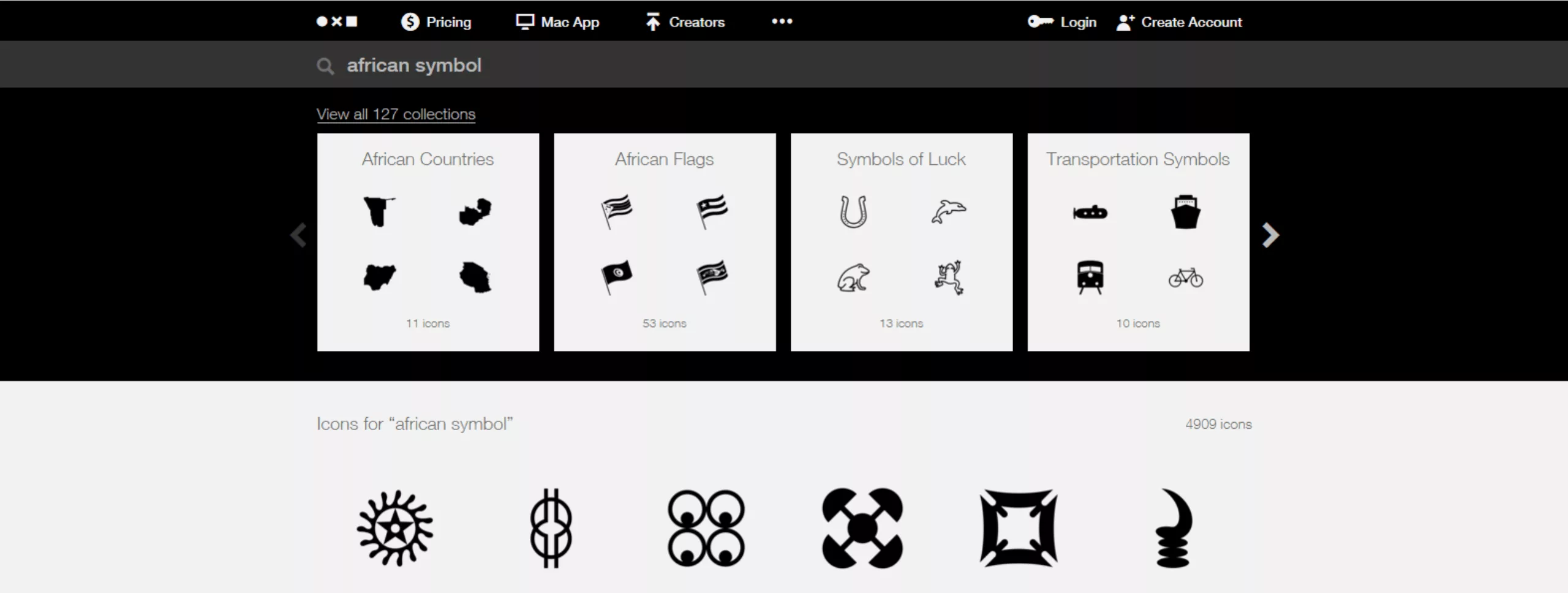
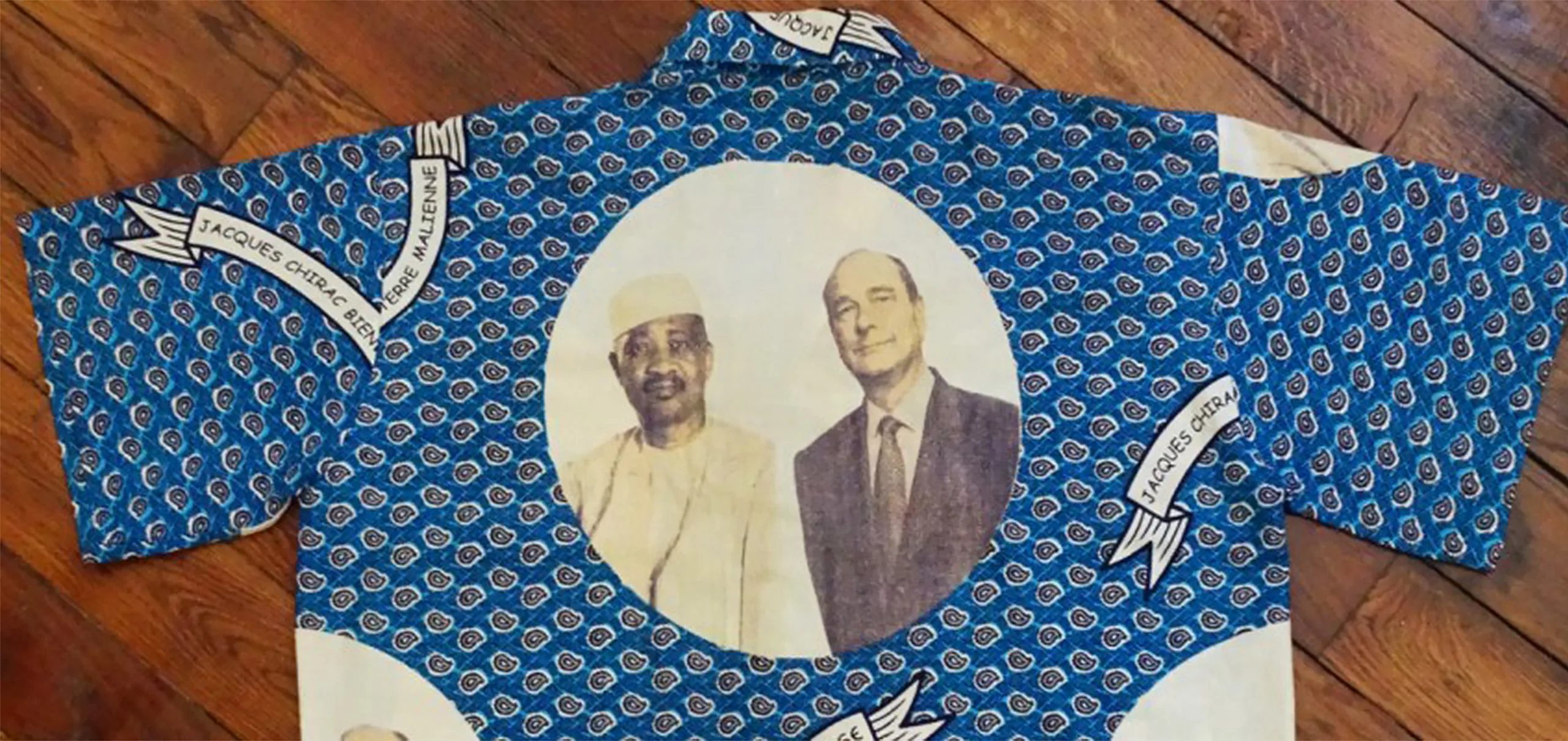
Wax is the new black
It’s impossible to speak about African graphic design without mentioning wax cotton. This alternative visual language is very popular on the continent. It offers a variety of patterns printed with wax technique on fabric measured in loincloth (1 loincloth = 1 yard of fabric).
Originally designed and produced in Indonesia, wax cotton was brought over by the renowned Dutch company Vlisco in the XXth century. These loincloth rapidly got close to the heart of African women, thus making its distribution easier throughout the continent. Fast enough, patterns evolved with African habits and customs, narrating History, political life, social relations, saying etc…
It’s almost impossible to guess who’s behind this or that design. However, experts can usually shed light on their meaning when needed. These patterns depict daily life objects, symbols, animals or even leading figures such as singers, religious icons (Jesus, Maria, priests, saints) or presidents (François Mitterrand, Jacques Chirac, Nicolas Sarkozy and François Hollande have their own wax cotton pattern).
Each region has a meaning of its own; this symbol or animal can illustrate a saying in a country but a quality in another. Vlisco invites wax cotton connoisseurs on their participative website to unveil the meaning and stories of deep buried symbols with uncertain origins.
For a long time, Beninese and Togolese women sold wax loincloth on the market. Taking advantage of the growing craze for wax cotton, some of them made a fortune and were able to show off in Mercedes, earning the nickname « mama benz ».
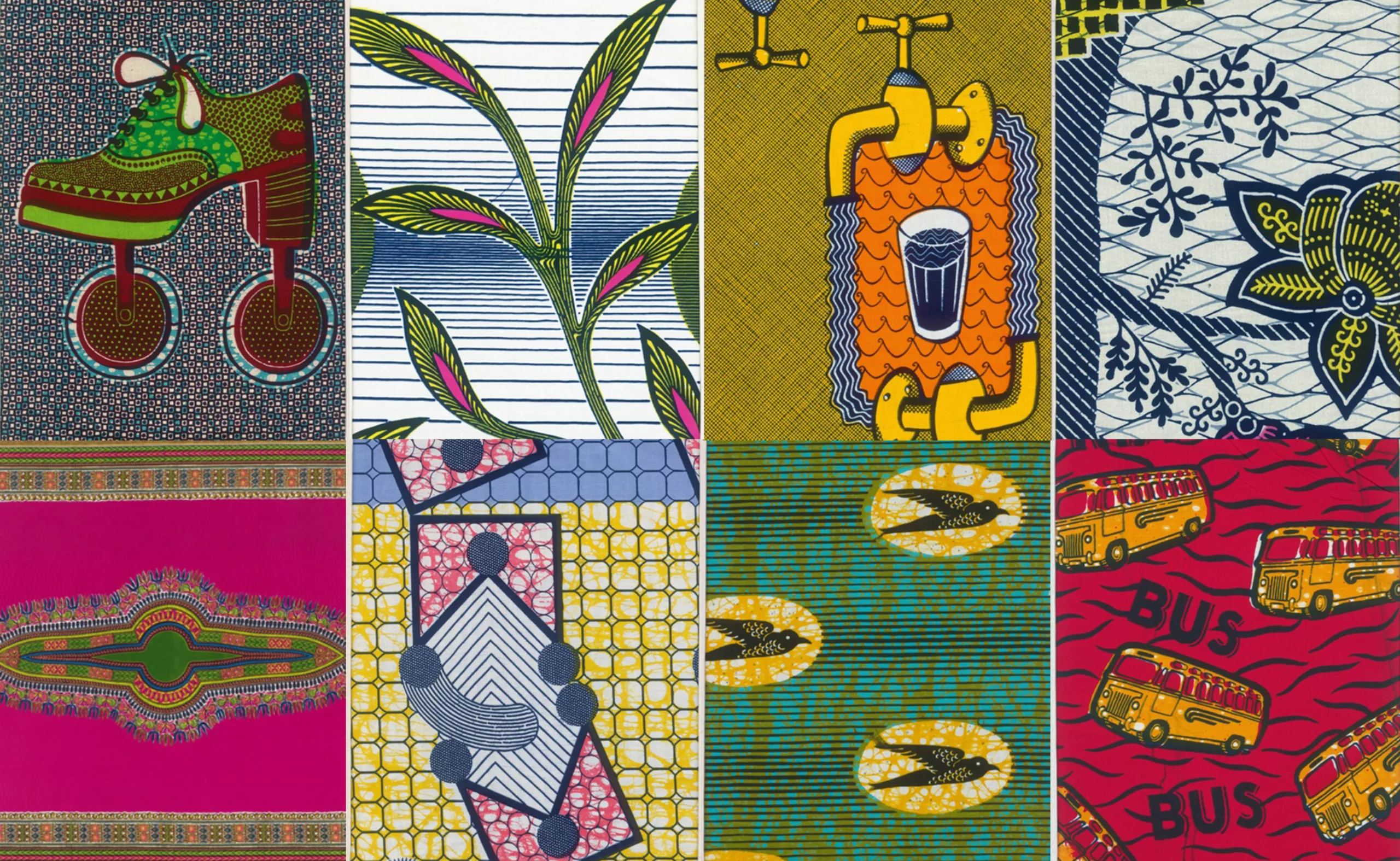
Wax cotton is used to create everyday and special occasion clothes. Some people, mainly the young ones, usually go for international/occidental clothing (jeans, T-shirts) but when comes a special occasion they certainly put on they wax garment. For wedding or funerals, the inviting family chooses the leading pattern design which will be used. The guests are then expected to use these wax designs on their specially crafted outfits.
Dressmakers demonstrate great skills in making dresses, suits, tunics, suits, trousers, etc. It must be for this reason that one can find a couturier on each street corner in Western Africa!
Nowadays, wax is starting to gain more and more of non-African designers‘ attention. Patterns on furniture, leather goods, shoes, jewels and everyday life objets (cars, phone cases etc) are becoming increasingly frequent.


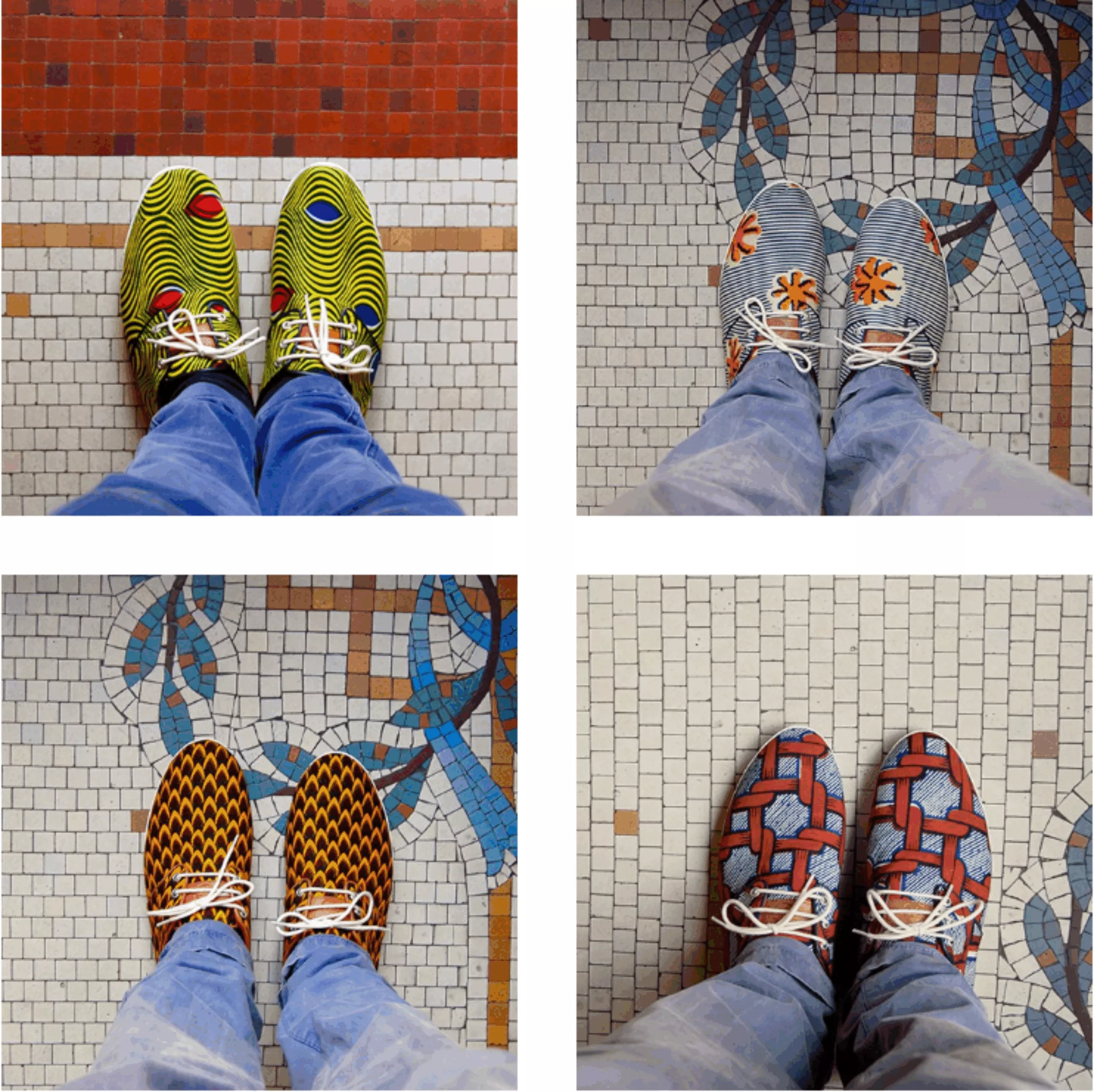
Through their meanings, with their colors and designs, these wax patterns are extremely rich. All the more so as they constantly evolve, encompassing elements of contemporary African daily life. Cellphones, fans and computers have already been part of wax design for a decade.
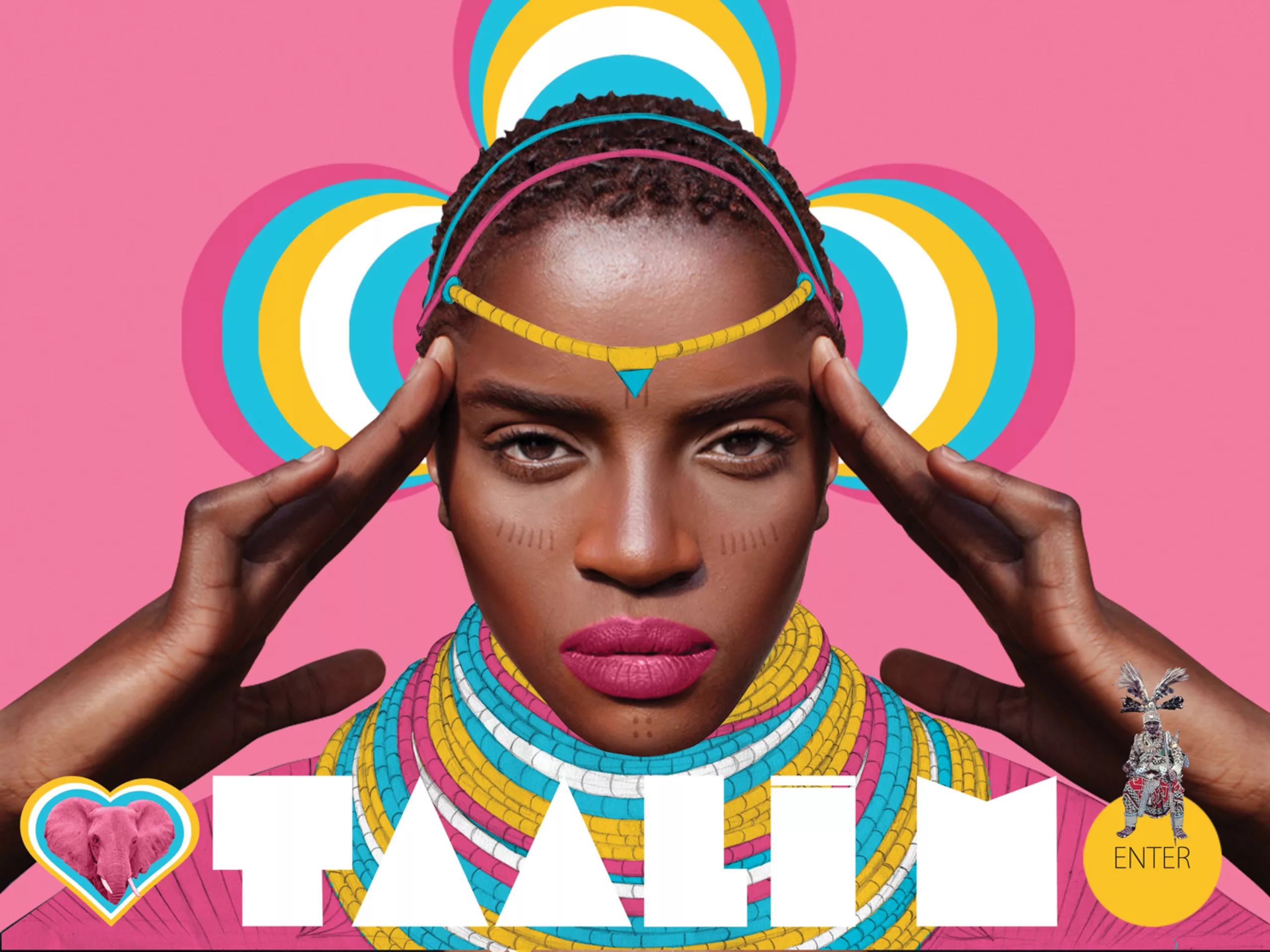
Afropolis
One year ago, the Vitra Design Museum dedicated a profuse exhibition on contemporary design techniques in Africa: Making Africa – A continent of Contemporary Design. In this daring exhibition, artists, designers, researchers and intellectuals illustrated that Africa is once again a land of innovation.
In 2050, a quarter of the population will live in Africa. It’s the most dynamic region in the world in terms of growth and mobile phones market. Not so long ago Africa had a limited access to technology. Nowadays, the digital revolution is an open door to the continent.
This exhibition helped to take a fresh look at contemporary design in Africa. Far from being solely limited to handcrafting productions for exotic purposes, Africa now stands as an experimental land of new approaches and solutions spread worldwide.
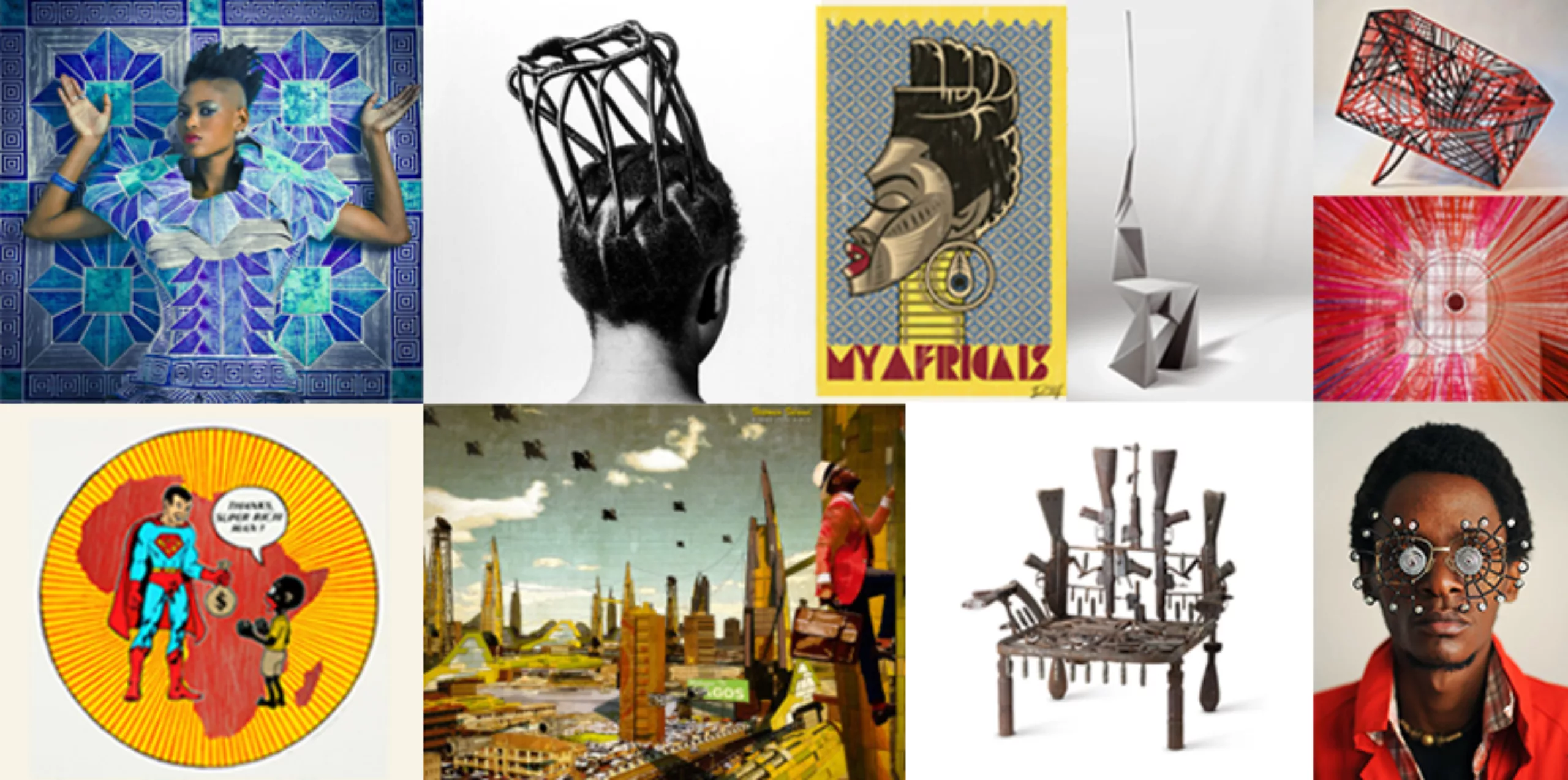
Pierre Christophe Gam is an ambassador of this new generation. Considered as the designer of the “African renaissance”, he graciously combines many roots : Egypto-Chadian on his mother’s side, an African art collector, and Franco-Cameroonian on his father’s side, a diplomat.
To embody this new Africa, Pierre-Christophe Gam finds his inspiration from his designer/set-designer experience in the luxury industry in London, Beijing or Bangkok, for Kenzo, Maison Martin Margiela, or the design agency Emotion (a Publicis subsidiary). Graduated from Central Saint Martins School (the famous Arts and Design London-based school), his inspiration comes from his journeys in Asia where he discovered manga art and more broadly the effusive oriental artistic contemporary scene.
In 2002 he renewed with his roots during a 7 months old travel, ending up in Cameroun, his ancestors’ land. Thirty years old at that time, the young man started an artistic project which still continues to this day: Afropolis, an “Afropolitan” virtual city, symbol of the renewal of a continent where contemporary artistic creation blossoms without restraints. From fashion to music clips, aesthetic codes combine African-Asian cultures in bright graphic references.
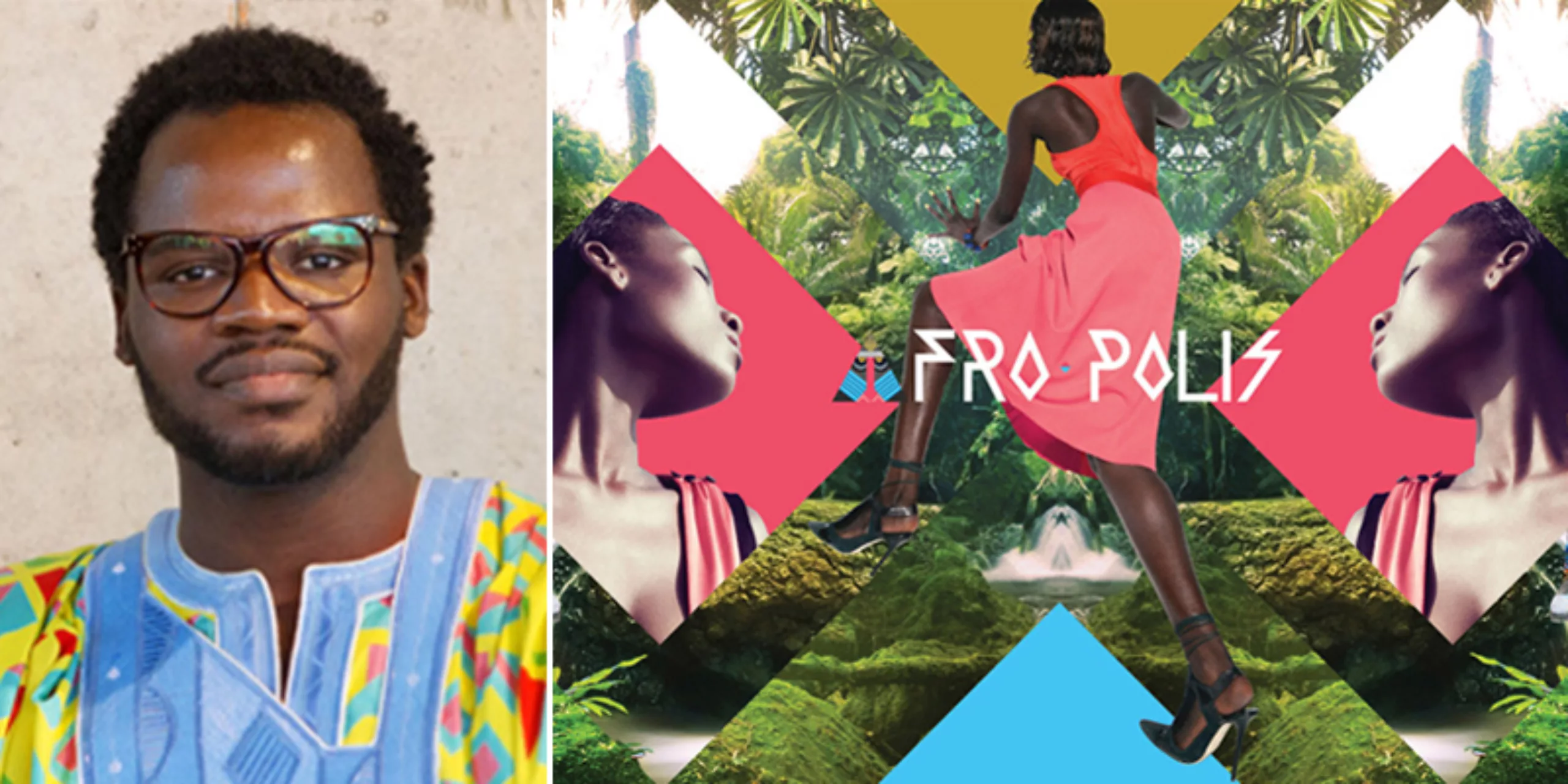
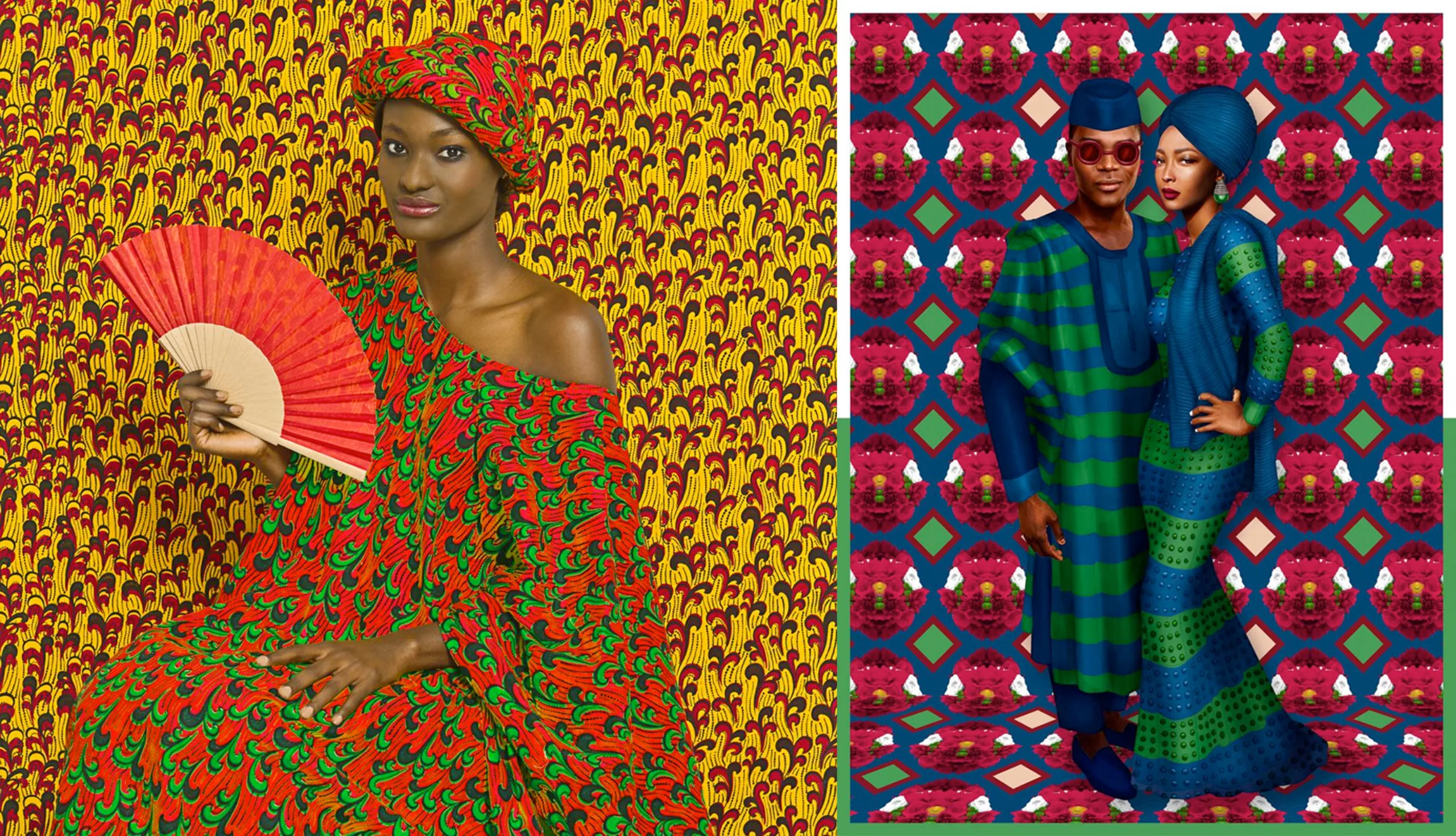
There is not enough Africa in computers
While writing this article a famous quote of Brian Eno comes to my mind, « There is not enough Africa in computers ». He stated so in an interview for Wired in 1995, when asked to share his view on the future of electro music.
“Do you know what I hate about computers? The problem with computers is that there is not enough Africa in them. This is why I can’t use them for very long. Do you know what a nerd is? A nerd is a human being without enough Africa in him or her. I know this sounds sort of inversely racist to say, but I think the African connection is so important. You know why music was the center of our lives for such a long time? Because it was a way of allowing Africa in. In 50 years, it might not be Africa; it might be Brazil. But I want so desperately for that sensibility to flood into these other areas, like computers.”
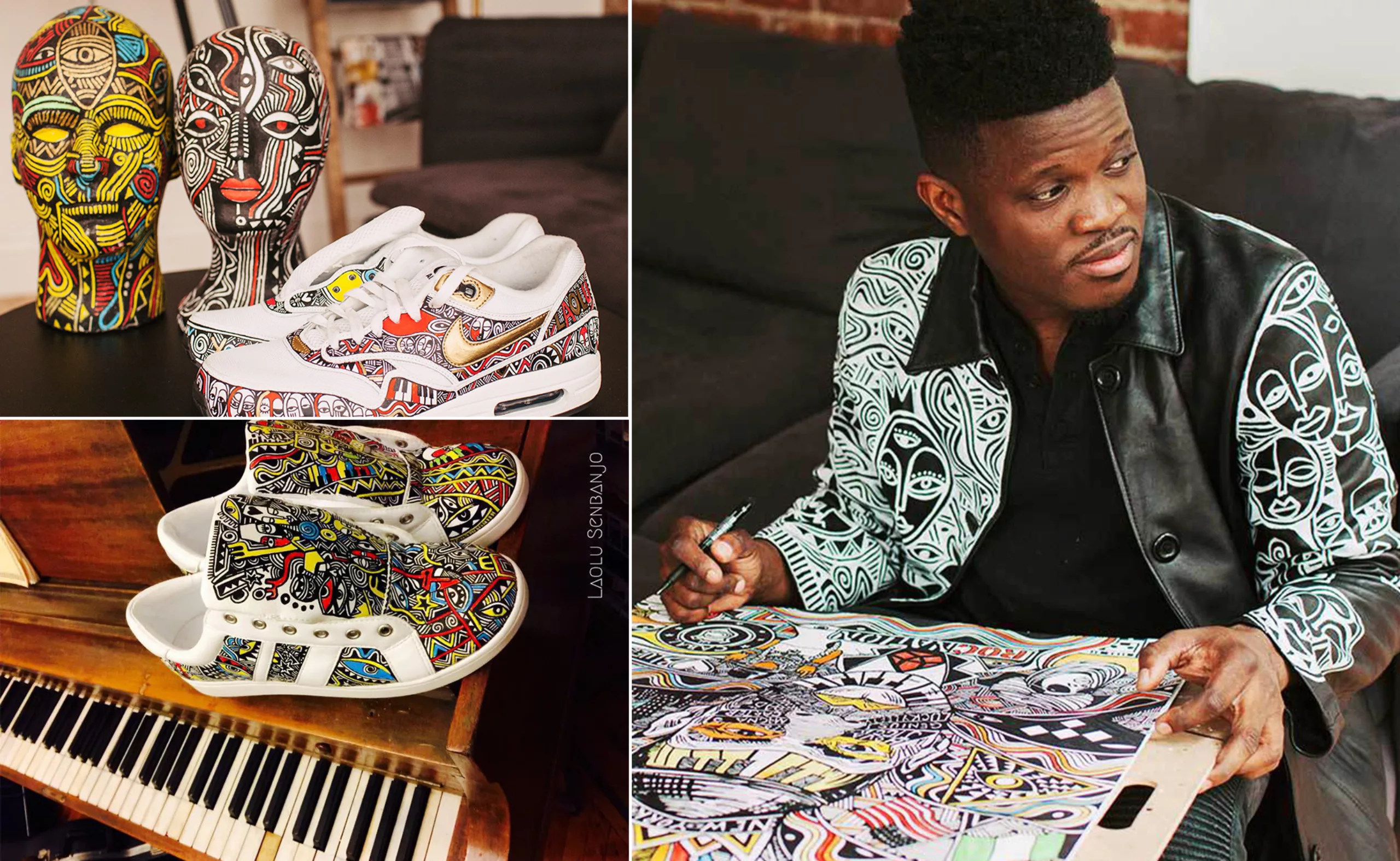
The end of exoticism?
Once fashion trend or marketing strategy, it seems that African influence is back. It would be valuable that we, European designers, start considering African creation out of the exotic prism. Nowadays, with the rise of the digital craze, things are starting to change. Young people start to have more and more interest for graphic design and end up developing their own peculiar style.
This new generation gives birth to symbols, patterns… a whole traditional graphic culture. This new creativity deserves our greatest respect, and we welcome this new inspiring approach.
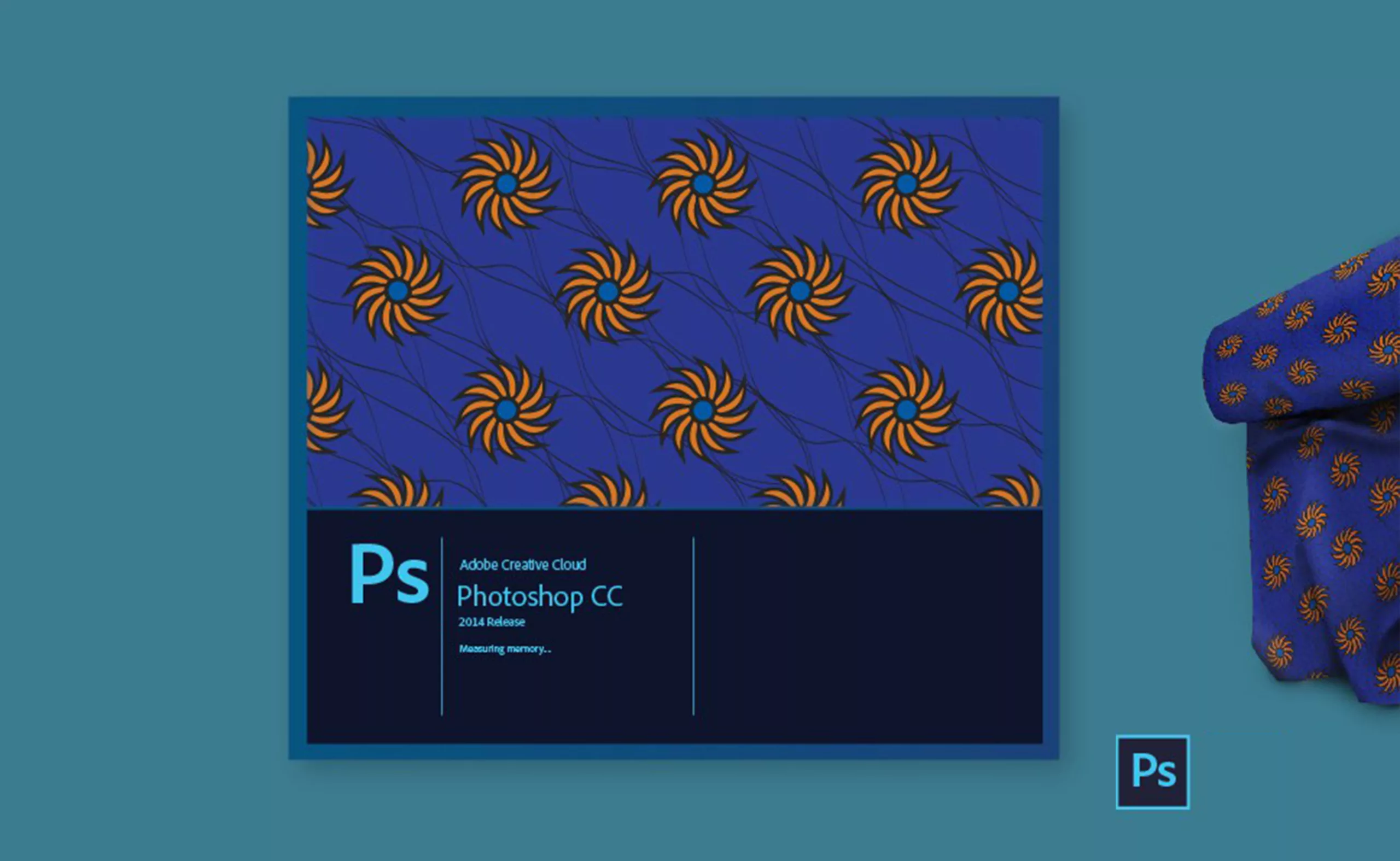
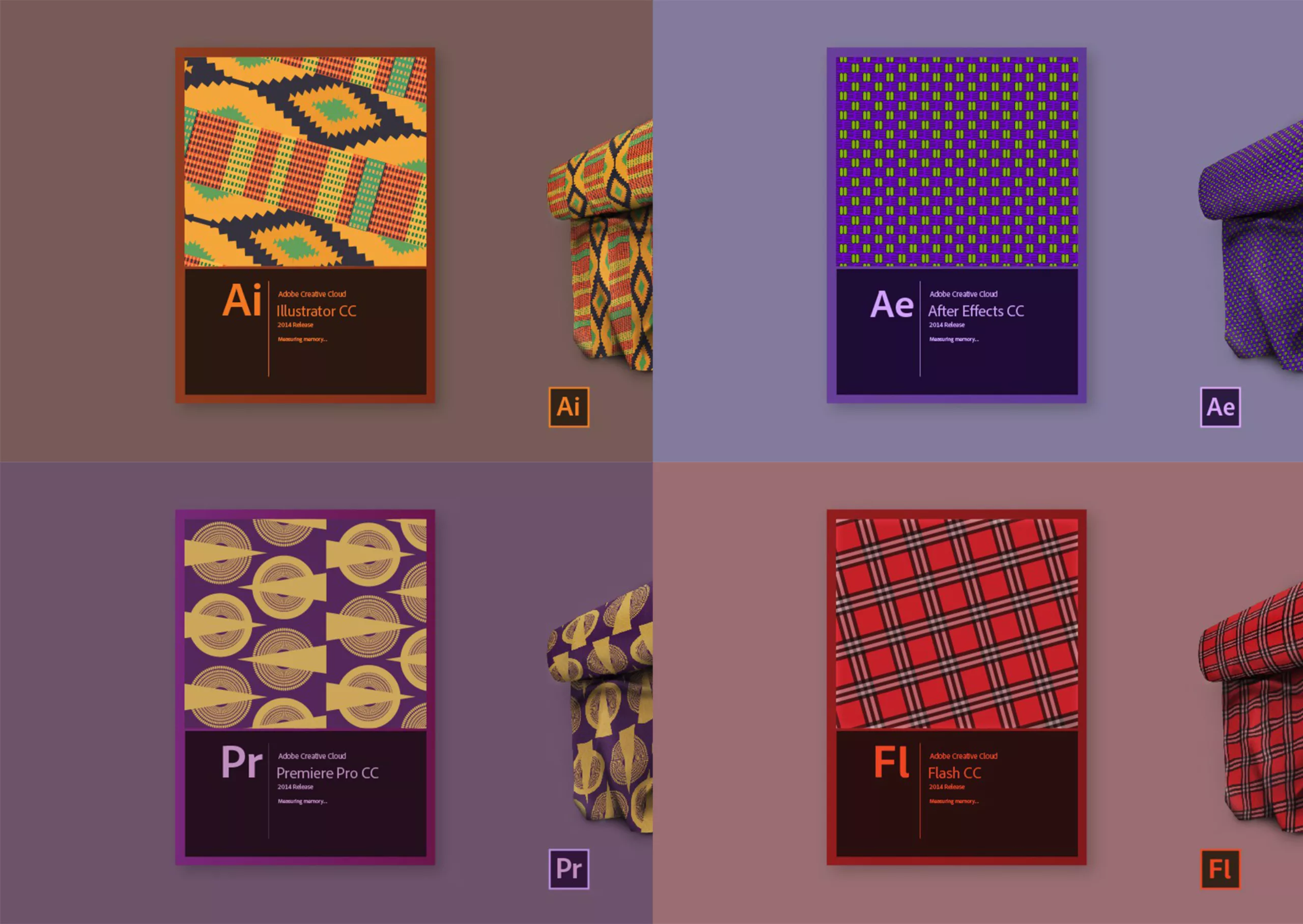
Black is beautiful
To conclude this article, we most welcome the editorial initiative of the Danish design studio Waait which created the magazine “Ogojiii”. This project grew out of two ideas combined together: cutting edge design innovation comes from Africa, and all design styles are crucial to create a brighter future.
Ogojiii brings together African communities from fashion, architecture, crafts and digital design backgrounds together in a web acting as a catalyst for entrepreneurship innovation dynamics. Ogojiii aims at revealing a new African élite wanting to enhance design perspectives as a lever for action for companies and industry.
To put the icing on the cake, this magazine is splendid on both form and substance. Sadly, it is quite hard to find in newsstands.
If, like me, you’ve had a crush on this magazine, I’d recommend you to buy it directly online.
You can learn more on this editorial project, and about the origin of its mysterious name in the video below:
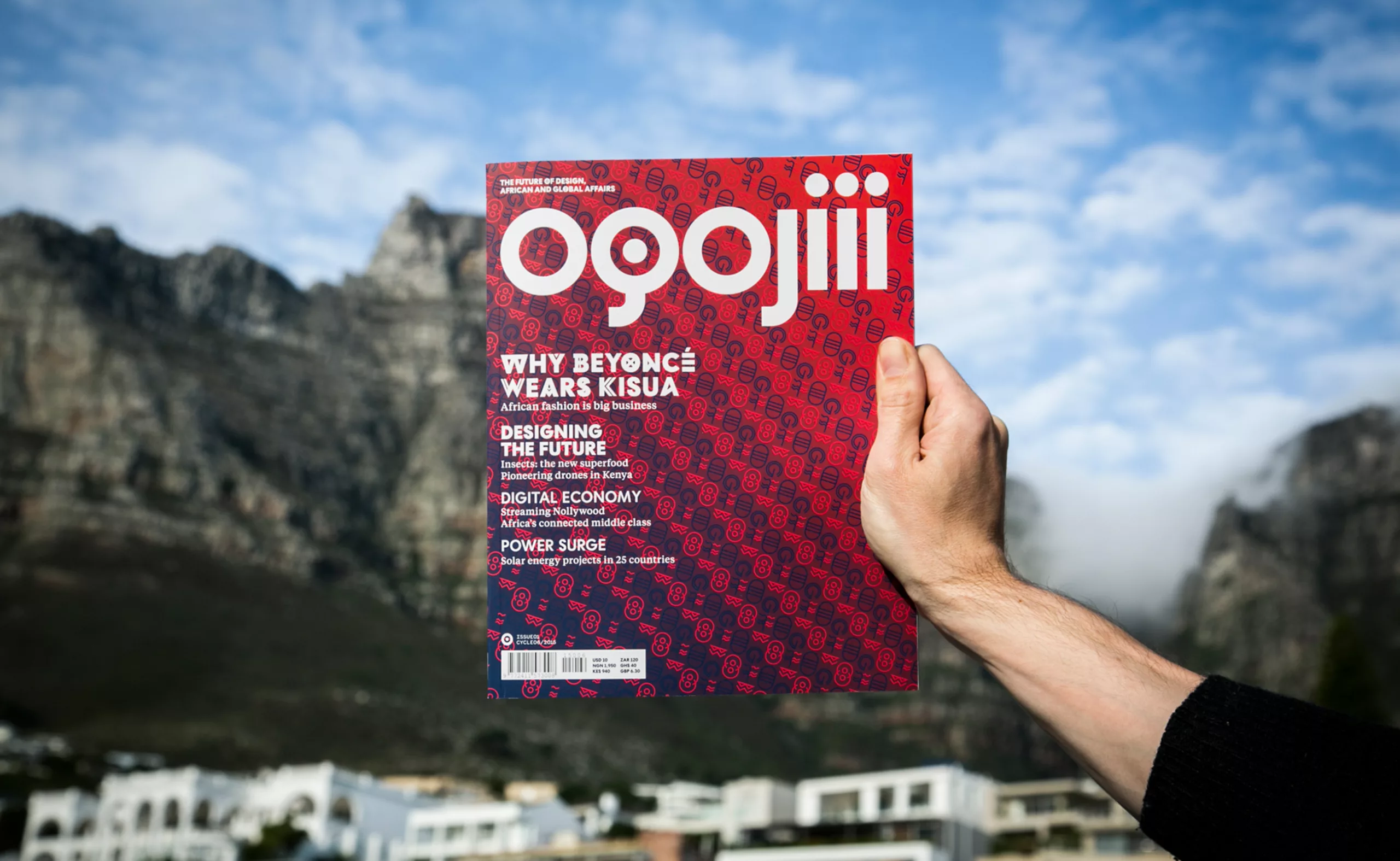
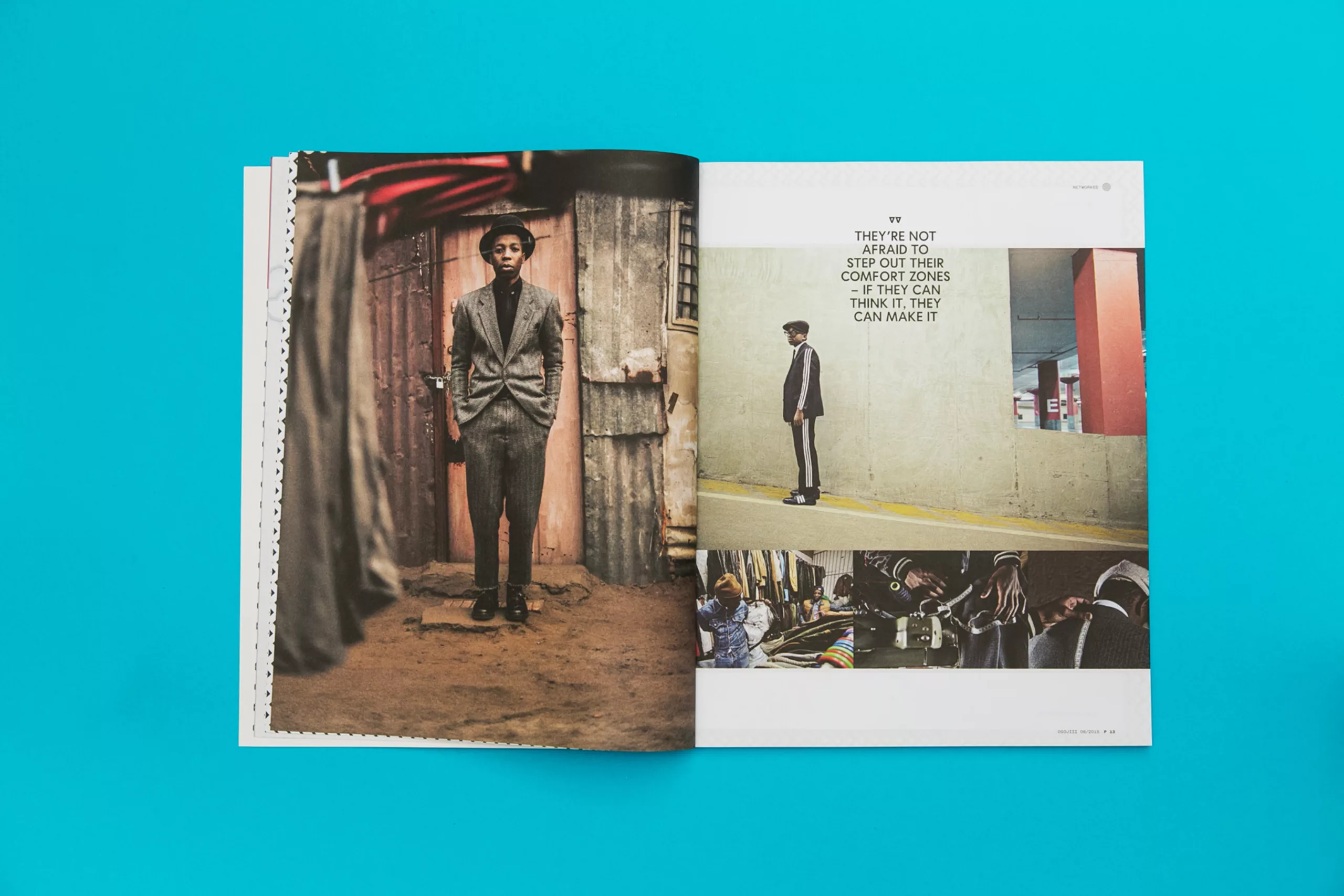
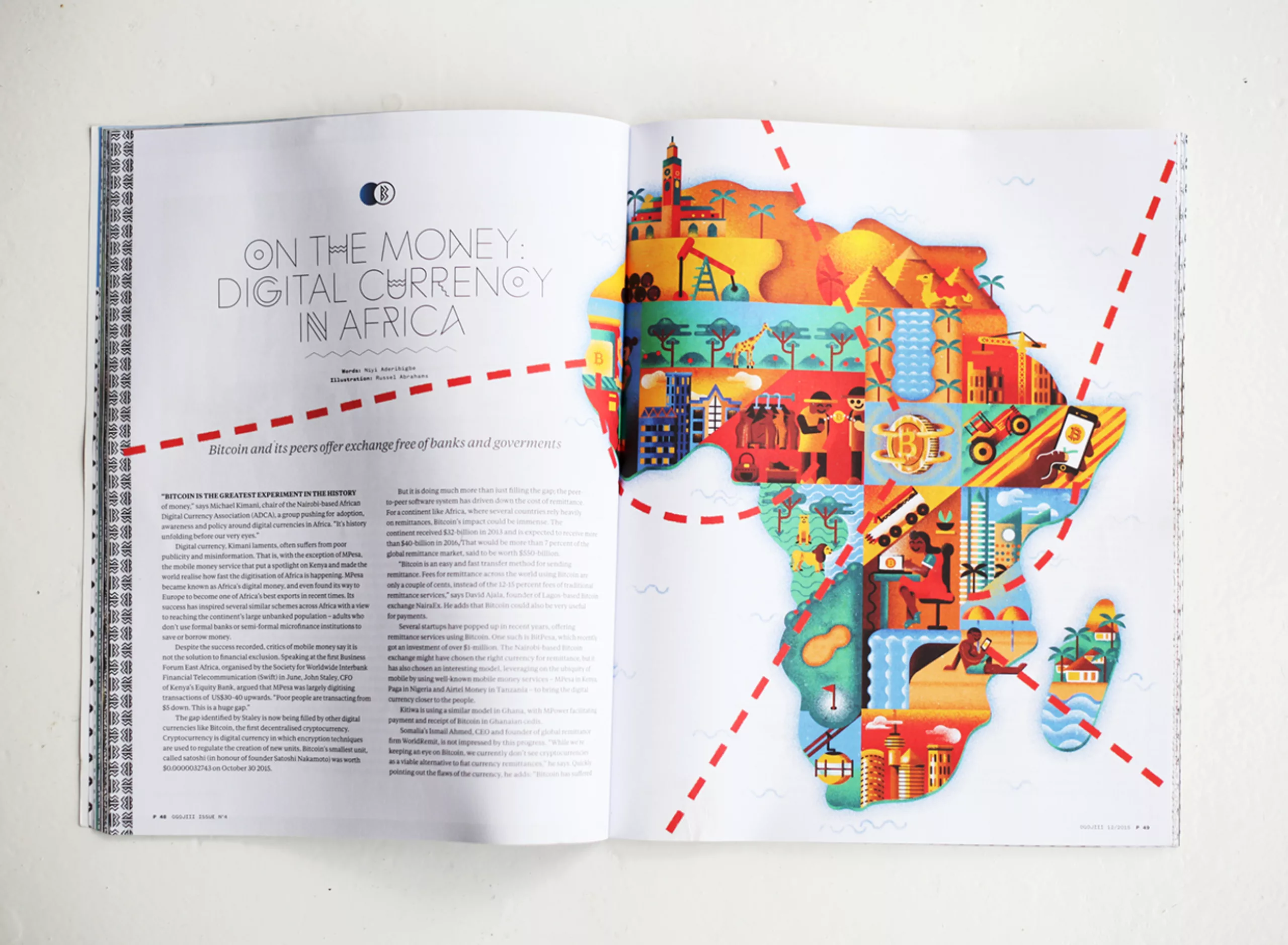

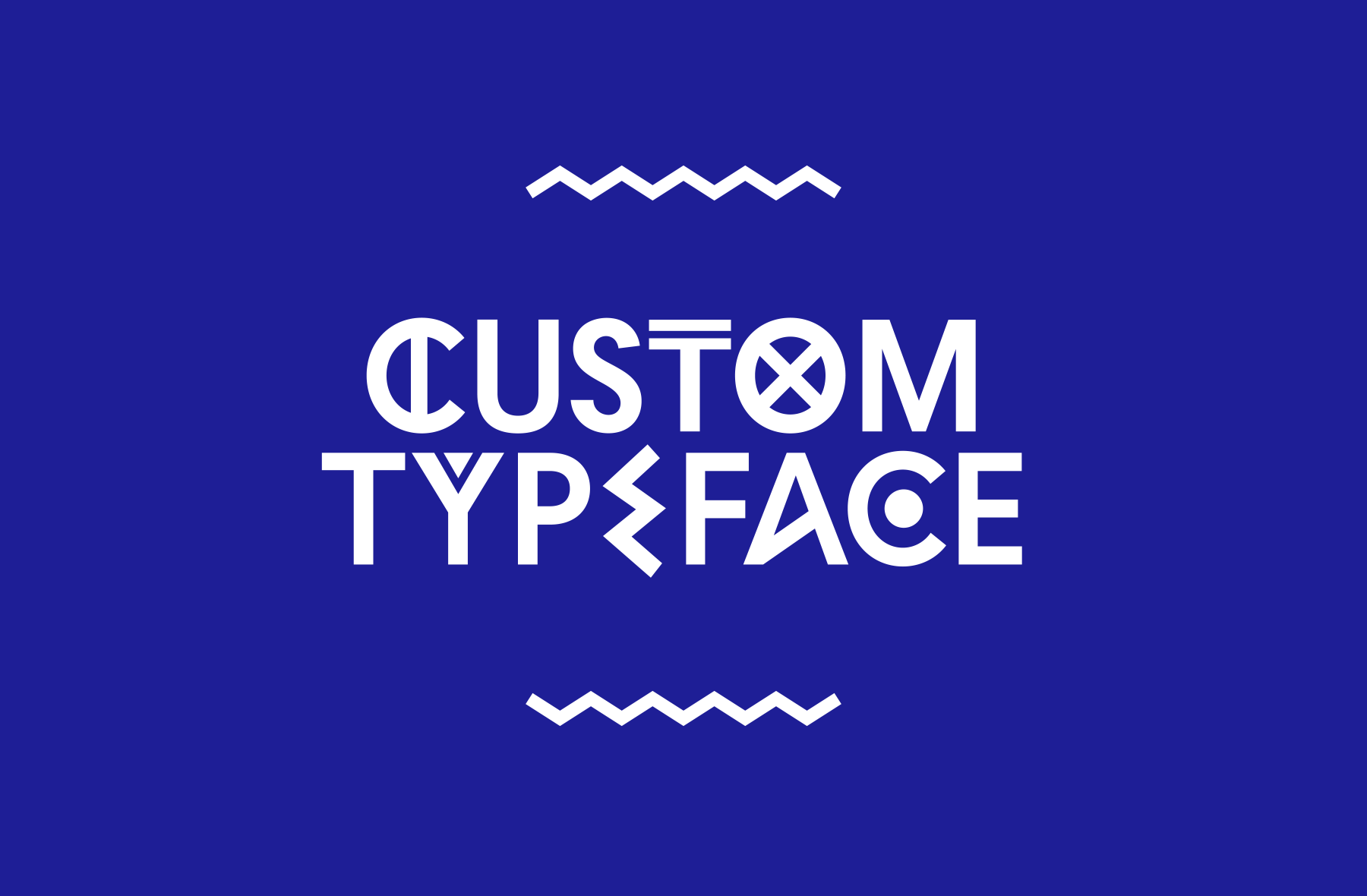

“Afri-typographic” inspiration
Martin Mirucah, student of Saki Mafundikwa based in Kenya, conceived the playful Mistari font.

We trully hope this topic will give you the taste to study more deeply the richness of graphic design in Africa, and who knows, you might be inspired for your next creations?
Credits:
Writing: Cécile Johanet / Jérémie Fesson
Re-reading and translation: Tiphaine Guillermou
Motion: Philip De Canaga

